An In-Depth Exploration of Unconventional Machining Techniques for INCONEL® Alloys
Abstract
1. Introduction
2. Materials and Methods
- Information was searched with the “INCONEL®”, “INCONEL® 718” and “INCONEL®625” keywords to gather more broad information about those Ni-based alloys.
- The keyword “non-conventional manufacturing” was added to the previous ones, which enabled seeking information that compared traditional to non-traditional manufacturing processes.
- Thanks to some review articles that enumerated non-conventional processes, such as “additive manufacturing with traditional processes”, “electrochemical machining”, and “electrical discharge machining”, among others addressed within this paper, this word merging strategy, alongside the combination of the process name to the material, was a central factor in obtaining the desired information.
- After collecting the articles, the journal’s influence was evaluated with its Web of Science score from 2021 (ignoring quartiles). All journals with an IF value of less than three were excluded, although rounding to the unit was allowed.
- Analysis of the abstract and conclusions from the collected articles proceeded.
3. Literature Review
3.1. Rough Machining Processes
3.1.1. Electrochemical Machining (ECM)
3.1.2. Electrical Discharge Machining (EDM)
3.1.3. Hybrid Manufacturing Processes
Additive Manufacturing (AM)
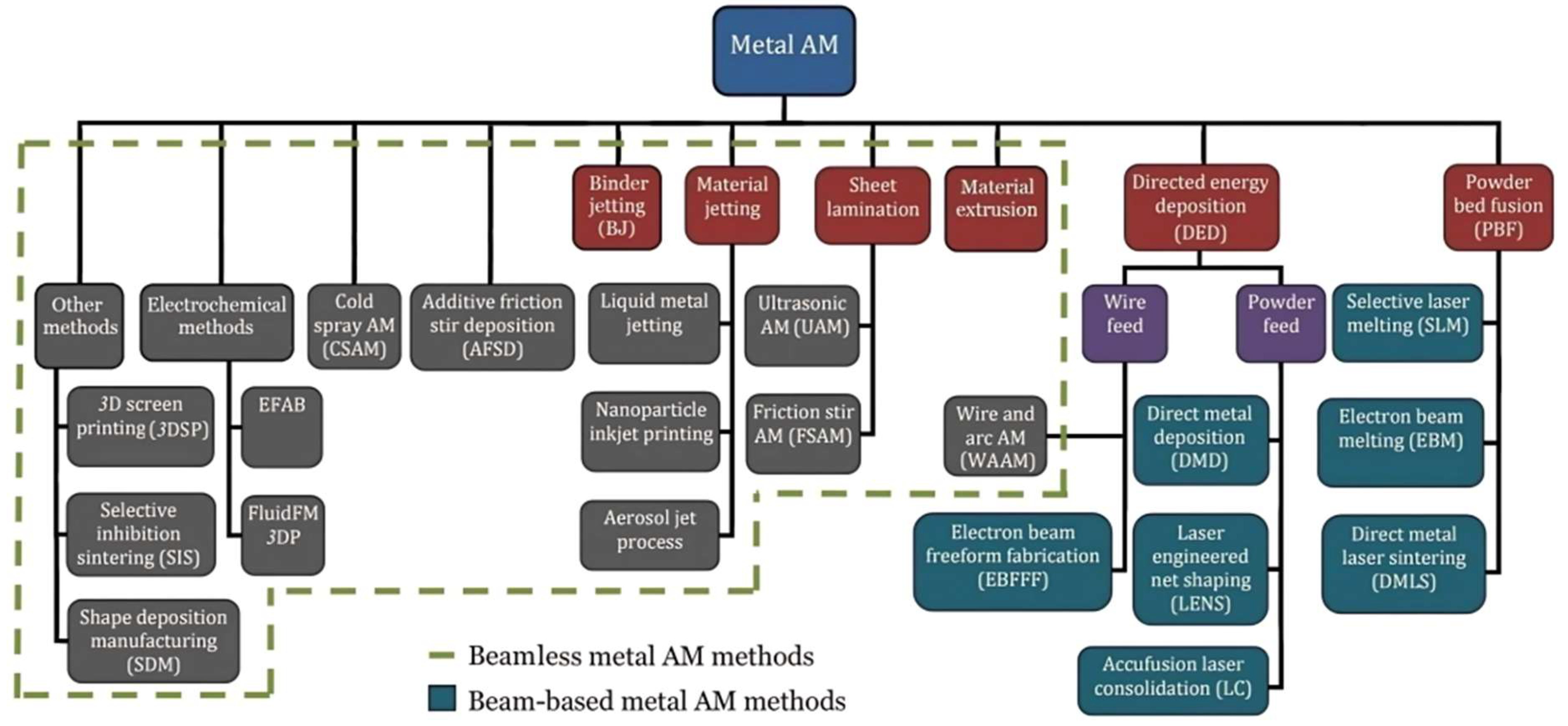
Thermally Assisted Machining (TAM)
Ultrasonic Machining (USM)
3.1.4. Laser Beam Machining and Laser Drilling Machining (LBM and LDM)
3.1.5. Water-Jet Machining (WJM)
3.2. Surface Finish Processes
4. Discussion
5. Conclusions
- Enhanced Mechanical Properties: Non-conventional INCONEL® machining processes prove effective in enhancing the mechanical properties of manufactured components;
- Diverse Techniques with Unique Advantages: Each addressed technique offers unique advantages along with inherent disadvantages, providing a range of options for manufacturers;
- Variability in Results: Variability in input parameters across studies results in differing outcomes, emphasizing the need for a more generic understanding of each process;
- EDM and Variants: Essential in modern manufacturing, EDM and its variants contribute to increased productivity but require careful consideration of parameters;
- Revolutionary Role of AM Techniques: AM techniques revolutionize manufacturing, producing customized and complex parts with high precision, especially when combined with traditional processes;
- Challenges in AM for INCONEL® 625: High residual stress, anisotropies and non-equilibrium solidification highlight the immaturity and insufficiency of AM parameters for INCONEL® alloys;
- Improvement and Competitiveness of TAM and USM: TAM and USM techniques show promise in improving tool life, surface quality and productivity and emerge as competitive processes, but ongoing research and development are necessary for performance optimization and reliability;
- Innovative LBM and LDM: LBM and LDM excel in machining complex designs and drilling precise holes, requiring careful consideration of parameters and ongoing optimizations;
- WJM and AWJM Dependence on Parameters: AWJM are non-contact processes highly dependent on optimizing process parameters and material properties;
- Need for Future Optimizations: Despite being known processes, AWJM require future optimizations to comprehend inherent mechanisms and improve efficiency for various applications;
- Potential of Surface Finishing Techniques: The addressed surface finishing non-traditional machining techniques show potential in improving productivity and quality, yet further research is needed for optimization;
- Skill Enhancement and Knowledge: The work contributes to improving practitioners’ skills and knowledge, addressing challenges in each process, and encouraging a shift from conventional to more evolved techniques suitable for advanced materials like INCONEL® alloys;
- Equipment Cost and Industrial Performance: Despite high equipment costs, wider adoption of unconventional equipment is crucial for achieving industrial performance, potentially leading to reduced prices and improved product quality;
- Suitability for High-Performance Materials: Unconventional processes are particularly suitable for high-performance materials, but training and expertise matching the sophistication of the equipment are crucial for successful implementation.
Author Contributions
Funding
Data Availability Statement
Acknowledgments
Conflicts of Interest
References
- Weber, J.H.; Banerjee, M.K. Nickel and Nickel Alloys: An Overview. In Reference Module in Materials Science and Materials Engineering; Elsevier: Amsterdam, The Netherlands, 2019. [Google Scholar]
- Ding, J.; Xue, S.; Shang, Z.; Li, J.; Zhang, Y.; Su, R.; Niu, T.; Wang, H.; Zhang, X. Characterization of precipitation in gradient Inconel 718 superalloy. Mater. Sci. Eng. A 2021, 804, 140718. [Google Scholar] [CrossRef]
- Chen, Z.; Song Soh, G. Chapter 6—Wire Arc Additive Manufacturing: Systems, Microstructure, Defects, Quality Control, and Modelling. In Additive Manufacturing: Materials, Functionalities and Applications; Zhou, K., Ed.; Springer International Publishing: Cham, Switzerland, 2023; pp. 205–243. [Google Scholar]
- Campbell, F.C. Chapter 6—Superalloys. In Manufacturing Technology for Aerospace Structural Materials; Campbell, F.C., Ed.; Elsevier Science: Oxford, UK, 2006; pp. 211–272. [Google Scholar]
- Liu, X.; Fan, J.; Zhang, P.; Cao, K.; Wang, Z.; Chen, F.; Liu, D.; Tang, B.; Kou, H.; Li, J. Influence of heat treatment on Inconel 625 superalloy sheet: Carbides, γ″, δ phase precipitation and tensile deformation behavior. J. Alloys Compd. 2023, 930, 167522. [Google Scholar] [CrossRef]
- Kassner, M.E. Chapter 11—γ/γ′ Nickel-Based Superalloys. In Fundamentals of Creep in Metals and Alloys, 3rd ed.; Kassner, M.E., Ed.; Butterworth-Heinemann: Boston, MA, USA, 2015; pp. 261–273. [Google Scholar]
- Nomoto, H. 13—Development in materials for ultra-supercritical and advanced ultra-supercritical steam turbines. In Advances in Steam Turbines for Modern Power Plants, 2nd ed.; Tanuma, T., Ed.; Woodhead Publishing: Sawston, UK, 2022; pp. 309–327. [Google Scholar]
- Pedroso, A.F.V.; Sebbe, N.P.V.; Costa, R.D.F.S.; Barbosa, M.L.S.; Sales-Contini, R.C.M.; Silva, F.J.G.; Campilho, R.D.S.G.; De Jesus, A.M.P. INCONEL® Alloy Machining and Tool Wear Finite Element Analysis Assessment: An Extended Review. J. Manuf. Mater. Process. 2024, 8, 37. [Google Scholar] [CrossRef]
- Murty, B.S.; Yeh, J.W.; Ranganathan, S.; Bhattacharjee, P.P. 8—Special subgroups of high-entropy alloys. In High-Entropy Alloys, 2nd ed.; Murty, B.S., Yeh, J.W., Ranganathan, S., Bhattacharjee, P.P., Eds.; Elsevier: Amsterdam, The Netherlands, 2019; pp. 145–163. [Google Scholar]
- De Bartolomeis, A.; Newman, S.T.; Jawahir, I.S.; Biermann, D.; Shokrani, A. Future research directions in the machining of Inconel 718. J. Mater. Process. Technol. 2021, 297, 117260. [Google Scholar] [CrossRef]
- Andresen, P.L. 5—Understanding and predicting stress corrosion cracking (SCC) in hot water. In Stress Corrosion Cracking of Nickel Based Alloys in Water-Cooled Nuclear Reactors; Féron, D., Staehle, R.W., Eds.; Woodhead Publishing: Sawston, UK, 2016; pp. 169–238. [Google Scholar]
- Madariaga, A.; Garay, A.; Esnaola, J.A.; Arrazola, P.J.; Linaza, A. Effect of surface integrity generated by machining on isothermal low cycle fatigue performance of Inconel 718. Eng. Fail. Anal. 2022, 137, 106422. [Google Scholar] [CrossRef]
- Yang, J.; Wang, S.; Xu, D.; Guo, Y.; Yang, C.; Li, Y. Effect of ammonium chloride on corrosion behavior of Ni-based alloys and stainless steel in supercritical water gasification process. Int. J. Hydrogen Energy 2017, 42, 19788–19797. [Google Scholar] [CrossRef]
- Chêne, J. 7—Stress corrosion cracking and hydrogen embrittlement. In Stress Corrosion Cracking of Nickel Based Alloys in Water-cooled Nuclear Reactors; Féron, D., Staehle, R.W., Eds.; Woodhead Publishing: Sawston, UK, 2016; pp. 295–311. [Google Scholar]
- Frangini, S.; Paoletti, C.; Della Seta, L. Corrosion of inconel alloys for application as inert anodes in low-temperature molten carbonate electrolysis processes. Int. J. Hydrogen Energy 2021, 46, 14953–14961. [Google Scholar] [CrossRef]
- Wei, C.; Wang, Z.; Chen, J. Sulfuration corrosion failure analysis of Inconel 600 alloy heater sleeve in high-temperature flue gas. Eng. Fail. Anal. 2022, 135, 106111. [Google Scholar] [CrossRef]
- Yin, M.; Shao, Y.; Kang, X.; Long, J.; Zhang, X. Fretting corrosion behavior of WC-10Co-4Cr coating on Inconel 690 alloy by HVOF thermal spraying. Tribol. Int. 2023, 177, 107975. [Google Scholar] [CrossRef]
- Zhang, W.; Xu, Y.; Shi, Y.; Su, G.; Gu, Y.; Volodymyr, K. Intergranular corrosion characteristics of high-efficiency wire laser additive manufactured Inconel 625 alloys. Corros. Sci. 2022, 205, 110422. [Google Scholar] [CrossRef]
- Soundararajan, C.K.; Wang, D.; Vinogradov, A. Effect of hydrogen on nanomechanical properties of Inconel 625 studied using in-situ electrochemical nanoindentation technique. J. Alloys Compd. 2023, 948, 169742. [Google Scholar] [CrossRef]
- Rodriguez, D.; Merwin, A.; Karmiol, Z.; Chidambaram, D. Surface chemistry and corrosion behavior of Inconel 625 and 718 in subcritical, supercritical, and ultrasupercritical water. Appl. Surf. Sci. 2017, 404, 443–451. [Google Scholar] [CrossRef]
- Anburaj, R.; Pradeep Kumar, M. Experimental studies on cryogenic CO2 face milling of Inconel 625 superalloy. Mater. Manuf. Process. 2021, 36, 814–826. [Google Scholar] [CrossRef]
- Li, X.; Liu, X.; Yue, C.; Liang, S.Y.; Wang, L. Systematic review on tool breakage monitoring techniques in machining operations. Int. J. Mach. Tools Manuf. 2022, 176, 103882. [Google Scholar] [CrossRef]
- Polishetty, A.; Littlefair, G. Chapter 1—Advances in conventional machining processes for machinability enhancement of difficult-to-machine materials. In Advanced Machining and Finishing; Gupta, K., Pramanik, A., Eds.; Elsevier: Amsterdam, The Netherlands, 2021; pp. 3–44. [Google Scholar]
- Weglowski, M.S.; Błacha, S.; Phillips, A. 6—Electron beam welding—Techniques and trends. In Welding and Joining of Aerospace Materials, 2nd ed.; Chaturvedi, M., Ed.; Woodhead Publishing: Sawston, UK, 2021; pp. 157–198. [Google Scholar]
- Minet, K.; Saharan, A.; Loesser, A.; Raitanen, N. 8—Superalloys, powders, process monitoring in additive manufacturing. In Additive Manufacturing for the Aerospace Industry; Froes, F., Boyer, R., Eds.; Elsevier: Amsterdam, The Netherlands, 2019; pp. 163–185. [Google Scholar]
- Hosseini, E.; Popovich, V.A. A review of mechanical properties of additively manufactured Inconel 718. Addit. Manuf. 2019, 30, 100877. [Google Scholar] [CrossRef]
- Wang, Q.; Ge, S.; Wu, D.; Ma, H.; Kang, J.; Liu, M.; Wang, T.; Narayanaswamy, B.; Su, R. Evolution of microstructural characteristics during creep behavior of Inconel 718 alloy. Mater. Sci. Eng. A 2022, 857, 143859. [Google Scholar] [CrossRef]
- Bhattacharyya, B.; Doloi, B. Chapter Two—Classification of advanced machining technology. In Modern Machining Technology; Bhattacharyya, B., Doloi, B., Eds.; Academic Press: Cambridge, MA, USA, 2020; pp. 9–19. [Google Scholar]
- Wang, Y.C.; Wang, L.Y.; Zhang, B.; Song, Z.M.; Luo, X.M.; Zhang, G.P. Building height-related creep properties of Inconel 718 superalloy fabricated by laser powder bed fusion. Mater. Sci. Eng. A 2022, 854, 143861. [Google Scholar] [CrossRef]
- Kim, K.-S.; Kang, T.-H.; Kassner, M.E.; Son, K.-T.; Lee, K.-A. High-temperature tensile and high cycle fatigue properties of inconel 625 alloy manufactured by laser powder bed fusion. Addit. Manuf. 2020, 35, 101377. [Google Scholar] [CrossRef]
- Kurniawan, R.; Park, G.C.; Park, K.M.; Zhen, Y.; Kwak, Y.I.; Kim, M.C.; Lee, J.M.; Ko, T.J.; Park, C.-S. Machinability of modified Inconel 713C using a WC TiAlN-coated tool. J. Manuf. Process. 2020, 57, 409–430. [Google Scholar] [CrossRef]
- Sebbe, N.P.V.; Fernandes, F.; Silva, F.J.G.; Sousa, V.F.C.; Sales-Contini, R.C.M.; Campilho, R.D.S.G.; Pedroso, A.F.V. Wear Behavior Analysis of TiN/TiAlN Coated Tools in Milling of Inconel 718. In Proceedings of the Flexible Automation and Intelligent Manufacturing: Establishing Bridges for More Sustainable Manufacturing Systems, Porto, Portugal, 18–22 June 2024; Springer: Cham, Switzerland, 2024; pp. 784–795. [Google Scholar]
- Sousa, V.F.C.; Silva, F.J.G.; Alexandre, R.; Fecheira, J.S.; Silva, F.P.N. Study of the wear behaviour of TiAlSiN and TiAlN PVD coated tools on milling operations of pre-hardened tool steel. Wear 2021, 476, 203695. [Google Scholar] [CrossRef]
- Sousa, V.F.C.; Fernandes, F.; Silva, F.J.G.; Costa, R.D.F.S.; Sebbe, N.; Sales-Contini, R.C.M. Wear Behavior Phenomena of TiN/TiAlN HiPIMS PVD-Coated Tools on Milling Inconel 718. Metals 2023, 13, 684. [Google Scholar] [CrossRef]
- Silva, F.J.G.; Sebbe, N.P.V.; Costa, R.D.F.S.; Pedroso, A.F.V.; Sales-Contini, R.C.M.; Barbosa, M.L.S.; Martinho, R.P. Investigations on the Surface Integrity and Wear Mechanisms of TiAlYN-Coated Tools in Inconel 718 Milling Operations. Materials 2024, 17, 443. [Google Scholar] [CrossRef]
- Osmond, L.; Curtis, D.; Slatter, T. Chip formation and wear mechanisms of SiAlON and whisker-reinforced ceramics when turning Inconel 718. Wear 2021, 486-487, 204128. [Google Scholar] [CrossRef]
- ISO 3685:1993; Tool-Life Testing with Single-Point Turning Tools. ISO: Geneva, Switzerland, 1993.
- Toubhans, B.; Fromentin, G.; Viprey, F.; Karaouni, H.; Dorlin, T. Machinability of inconel 718 during turning: Cutting force model considering tool wear, influence on surface integrity. J. Mater. Process. Technol. 2020, 285, 116809. [Google Scholar] [CrossRef]
- Sousa, V.F.C.; Silva, F.J.G.; Fecheira, J.S.; Lopes, H.M.; Martinho, R.P.; Casais, R.B.; Ferreira, L.P. Cutting Forces Assessment in CNC Machining Processes: A Critical Review. Sensors 2020, 20, 4536. [Google Scholar] [CrossRef]
- Pleta, A.; Nithyanand, G.; Niaki, F.A.; Mears, L. Identification of optimal machining parameters in trochoidal milling of Inconel 718 for minimal force and tool wear and investigation of corresponding effects on machining affected zone depth. J. Manuf. Process. 2019, 43, 54–62. [Google Scholar] [CrossRef]
- ISO 8688-2:1989; Tool Life Testing in Milling—Part 2: End Milling. ISO: Geneva, Switzerland, 1989.
- Suárez, A.; Veiga, F.; Polvorosa, R.; Artaza, T.; Holmberg, J.; De Lacalle, L.N.L.; Wretland, A. Surface integrity and fatigue of non-conventional machined Alloy 718. J. Manuf. Process. 2019, 48, 44–50. [Google Scholar] [CrossRef]
- Pedroso, A.F.V.; Sousa, V.F.C.; Sebbe, N.P.V.; Silva, F.J.G.; Campilho, R.D.S.G.; Sales-Contini, R.C.M.; Jesus, A.M.P. A Comprehensive Review on the Conventional and Non-Conventional Machining and Tool-Wear Mechanisms of INCONEL®. Metals 2023, 13, 585. [Google Scholar] [CrossRef]
- Pedroso, A.F.V.; Sousa, V.F.C.; Sebbe, N.P.V.; Silva, F.J.G.; Campilho, R.D.S.G.; Sales-Contini, R.C.M.; Nogueira, F.R. A Review of INCONEL® Alloy’s Non-conventional Machining Processes. In Proceedings of the Flexible Automation and Intelligent Manufacturing: Establishing Bridges for More Sustainable Manufacturing Systems, Porto, Portugal, 18–22 June 2023; Springer: Cham, Switzerland, 2024; pp. 773–783. [Google Scholar]
- Liao, Y.; Deschamps, F.; Loures, E.d.F.R.; Ramos, L.F.P. Past, present and future of Industry 4.0—A systematic literature review and research agenda proposal. Int. J. Prod. Res. 2017, 55, 3609–3629. [Google Scholar] [CrossRef]
- Azarian, M.; Yu, H.; Shiferaw, A.T.; Stevik, T.K. Do We Perform Systematic Literature Review Right? A Scientific Mapping and Methodological Assessment. Logistics 2023, 7, 89. [Google Scholar] [CrossRef]
- Tóth, Á.; Suta, A.; Pimentel, J.; Argoti, A. A comprehensive, semi-automated systematic literature review (SLR) design: Application to P-graph research with a focus on sustainability. J. Clean. Prod. 2023, 415, 137741. [Google Scholar] [CrossRef]
- Sharma, P.; Chakradhar, D. Chapter 10—Advancements in electrochemical machining. In Advanced Machining and Finishing; Gupta, K., Pramanik, A., Eds.; Elsevier: Amsterdam, The Netherlands, 2021; pp. 375–396. [Google Scholar]
- Noor, W.I.; Saleh, T. Chapter 13—Electrochemical machining for microfabrication. In Micro Electro-Fabrication; Saleh, T., Mohamed Ali, M.S., Takahata, K., Eds.; Elsevier: Amsterdam, The Netherlands, 2021; pp. 339–386. [Google Scholar]
- Ranjan, R.; Rai, R.S.; Bajpai, V. Chapter 7—Advances in conventional and nonconventional high-speed machining. In Advanced Machining and Finishing; Gupta, K., Pramanik, A., Eds.; Elsevier: Amsterdam, The Netherlands, 2021; pp. 253–286. [Google Scholar]
- Perveen, A.; Akar, S. Chapter 12—Electrochemical discharge machining: Trends and development. In Micro Electro-Fabrication; Saleh, T., Mohamed Ali, M.S., Takahata, K., Eds.; Elsevier: Amsterdam, The Netherlands, 2021; pp. 317–338. [Google Scholar]
- Manikandan, N.; Kumanan, S.; Sathiyanarayanan, C. Multiple performance optimization of electrochemical drilling of Inconel 625 using Taguchi based Grey Relational Analysis. Eng. Sci. Technol. Int. J. 2017, 20, 662–671. [Google Scholar] [CrossRef]
- Niu, S.; Qu, N.; Yue, X.; Li, H. Effect of tool-sidewall outlet hole design on machining performance in electrochemical mill-grinding of Inconel 718. J. Manuf. Process. 2019, 41, 10–22. [Google Scholar] [CrossRef]
- Wang, J.; Xu, Z.; Wang, J.; Zhu, D. Anodic dissolution characteristics of Inconel 718 in C6H5K3O7 and NaNO3 solutions by pulse electrochemical machining. Corros. Sci. 2021, 183, 109335. [Google Scholar] [CrossRef]
- Kong, W.; Zeng, Y.; Liu, Z.; Hu, X.; Kong, H. Helical wire electrochemical discharge machining on large-thickness Inconel 718 alloy in low-conductivity salt-glycol solution. Chin. J. Aeronaut. 2022, 36, 522–533. [Google Scholar] [CrossRef]
- Ren, M.; Zhu, D.; Li, Z.; Lei, G. Electrochemical dissolution behavior of phosphorus and boron doped Inconel 718 alloy in NaNO3 solution. J. Alloys Compd. 2023, 944, 169140. [Google Scholar] [CrossRef]
- Liu, L.; Thangaraj, M.; Karmiris-Obratański, P.; Zhou, Y.; Annamalai, R.; Machnik, R.; Elsheikh, A.; Markopoulos, A.P. Optimization of Wire EDM Process Parameters on Cutting Inconel 718 Alloy with Zinc-Diffused Coating Brass Wire Electrode Using Taguchi-DEAR Technique. Coatings 2022, 12, 1612. [Google Scholar] [CrossRef]
- Kliuev, M.; Florio, K.; Akbari, M.; Wegener, K. Influence of energy fraction in EDM drilling of Inconel 718 by statistical analysis and finite element crater-modelling. J. Manuf. Process. 2019, 40, 84–93. [Google Scholar] [CrossRef]
- Kathiresan, M.; Theerkka Tharisanan, R.; Pandiarajan, P. Chapter Seven—Computational analysis of provisional study on white layer properties by EDM vs. WEDM of aluminum metal matrix composites. In Computational Intelligence in Manufacturing; Kumar, K., Kakandikar, G., Davim, J.P., Eds.; Woodhead Publishing: Sawston, UK, 2022; pp. 131–159. [Google Scholar]
- Xu, M.; Wei, R.; Li, C.; Ko, T.J. High-frequency electrical discharge assisted milling of Inconel 718 under copper-beryllium bundle electrodes. J. Manuf. Process. 2023, 85, 1116–1132. [Google Scholar] [CrossRef]
- Yue, X.; Yang, X. The role of discharge plasma on molten pool dynamics in EDM. J. Mater. Process. Technol. 2021, 293, 117092. [Google Scholar] [CrossRef]
- Sivaprakasam, P.; Hariharan, P.; Gowri, S.; Udaya Prakash, J. Chapter Six—Machining performance analysis of micro-ED milling process of titanium alloy (Ti-6Al-4V). In Computational Intelligence in Manufacturing; Kumar, K., Kakandikar, G., Davim, J.P., Eds.; Woodhead Publishing: Sawston, UK, 2022; pp. 111–129. [Google Scholar]
- Rahman, M.A.; Ahmed, A.; Mia, M. Chapter 3—Trends in electrical discharge machining of Ti- and Ni-based superalloys: Macro-micro-compound arc/spark/melt process. In Micro Electro-Fabrication; Saleh, T., Mohamed Ali, M.S., Takahata, K., Eds.; Elsevier: Amsterdam, The Netherlands, 2021; pp. 63–87. [Google Scholar]
- Goyal, A. Investigation of material removal rate and surface roughness during wire electrical discharge machining (WEDM) of Inconel 625 super alloy by cryogenic treated tool electrode. J. King Saud Univ. Sci. 2017, 29, 528–535. [Google Scholar] [CrossRef]
- Rahul; Datta, S.; Biswal, B.B.; Mahapatra, S.S. Machinability analysis of Inconel 601, 625, 718 and 825 during electro-discharge machining: On evaluation of optimal parameters setting. Measurement 2019, 137, 382–400. [Google Scholar] [CrossRef]
- Zhang, Y.; Guo, S.; Zhang, Z.; Huang, H.; Li, W.; Zhang, G.; Huang, Y. Simulation and experimental investigations of complex thermal deformation behavior of wire electrical discharge machining of the thin-walled component of Inconel 718. J. Mater. Process. Technol. 2019, 270, 306–322. [Google Scholar] [CrossRef]
- Farooq, M.U.; Anwar, S.; Kumar, M.S.; AlFaify, A.; Ali, M.A.; Kumar, R.; Haber, R. A Novel Flushing Mechanism to Minimize Roughness and Dimensional Errors during Wire Electric Discharge Machining of Complex Profiles on Inconel 718. Materials 2022, 15, 7330. [Google Scholar] [CrossRef]
- Sharma, D.; Bhowmick, A.; Goyal, A. Enhancing EDM performance characteristics of Inconel 625 superalloy using response surface methodology and ANFIS integrated approach. CIRP J. Manuf. Sci. Technol. 2022, 37, 155–173. [Google Scholar] [CrossRef]
- Kumar, D.; Sisodiya, M.S.; Mandal, D.K.; Bajpai, V. Maglev micro-EDM: Feasibility and performance on Inconel 625. CIRP J. Manuf. Sci. Technol. 2023, 40, 155–166. [Google Scholar] [CrossRef]
- ASTM B 194-15; Standard Specification for Copper-Beryllium Alloy Plate, Sheet, Strip, and Rolled Bar. ASTM International: West Conshohocken, PA, USA, 2015. [CrossRef]
- Mahbub, M.R.; Rashid, A.; Jahan, M.P. Chapter 8—Hybrid machining and finishing processes. In Advanced Machining and Finishing; Gupta, K., Pramanik, A., Eds.; Elsevier: Amsterdam, The Netherlands, 2021; pp. 287–338. [Google Scholar]
- Lu, C.; Shi, J. Simultaneous consideration of relative density, energy consumption, and build time for selective laser melting of Inconel 718: A multi-objective optimization study on process parameter selection. J. Clean. Prod. 2022, 369, 133284. [Google Scholar] [CrossRef]
- ASTM B 637-16; Standard Specification for Precipitation-Hardening and Cold Worked Nickel Alloy Bars, Forgings, and Forging Stock for Moderate or High Temperature Service. ASTM International: West Conshohocken, PA, USA, 2016. [CrossRef]
- Yangfan, W.; Xizhang, C.; Chuanchu, S. Microstructure and mechanical properties of Inconel 625 fabricated by wire-arc additive manufacturing. Surf. Coat. Technol. 2019, 374, 116–123. [Google Scholar] [CrossRef]
- Guimarães, R.P.M.; Minkowitz, L.; Arneitz, S.; Sommitsch, C.; Giedenbacher, J.; Müller, M.; Huskic, A.; Wild, N.; Buzolin, R.H.; Meier, B.; et al. Chapter 1—Powder bed fusion processes: Main classes of alloys, current status, and technological trends. In Advances in Metal Additive Manufacturing; Salunkhe, S., Amancio-Filho, S.T., Davim, J.P., Eds.; Woodhead Publishing: Sawston, UK, 2023; pp. 1–104. [Google Scholar]
- Guimarães, R.P.M.; Pixner, F.; Enzinger, N.; Feliciano Belei, C.A.; Effertz, P.d.S.; Amancio-Filho, S.T. Chapter 2—Directed energy deposition processes and process design by artificial intelligence. In Advances in Metal Additive Manufacturing; Salunkhe, S., Amancio-Filho, S.T., Davim, J.P., Eds.; Woodhead Publishing: Sawston, UK, 2023; pp. 105–146. [Google Scholar]
- Sebbe, N.P.V.; Fernandes, F.; Sousa, V.F.C.; Silva, F.J.G. Hybrid Manufacturing Processes Used in the Production of Complex Parts: A Comprehensive Review. Metals 2022, 12, 1874. [Google Scholar] [CrossRef]
- Sanchez, S.; Smith, P.; Xu, Z.; Gaspard, G.; Hyde, C.J.; Wits, W.W.; Ashcroft, I.A.; Chen, H.; Clare, A.T. Powder Bed Fusion of nickel-based superalloys: A review. Int. J. Mach. Tools Manuf. 2021, 165, 103729. [Google Scholar] [CrossRef]
- Vaezi, M.; Drescher, P.; Seitz, H. Beamless Metal Additive Manufacturing. Materials 2020, 13, 922. [Google Scholar] [CrossRef]
- Avery, D.Z.; Rivera, O.G.; Mason, C.J.T.; Phillips, B.J.; Jordon, J.B.; Su, J.; Hardwick, N.; Allison, P.G. Fatigue Behavior of Solid-State Additive Manufactured Inconel 625. JOM 2018, 70, 2475–2484. [Google Scholar] [CrossRef]
- Balbaa, M.; Mekhiel, S.; Elbestawi, M.; McIsaac, J. On selective laser melting of Inconel 718: Densification, surface roughness, and residual stresses. Mater. Des. 2020, 193, 108818. [Google Scholar] [CrossRef]
- Elshalakany, A.B.; Abdel-Mottaleb, M.M.; Salunkhe, S.; Alqahtani, B. Chapter 7—Mechanical properties of titanium alloys additive manufacturing for biomedical applications. In Advances in Metal Additive Manufacturing; Salunkhe, S., Amancio-Filho, S.T., Davim, J.P., Eds.; Woodhead Publishing: Sawston, UK, 2023; pp. 219–231. [Google Scholar]
- Nguyen, Q.B.; Nai, M.L.S.; Zhu, Z.; Sun, C.-N.; Wei, J.; Zhou, W. Characteristics of Inconel Powders for Powder-Bed Additive Manufacturing. Engineering 2017, 3, 695–700. [Google Scholar] [CrossRef]
- ASTM B 212-17; Standard Test Method for Apparent Density of Free-Flowing Metal Powders Using the Hall Flowmeter Funnel. ASTM International: West Conshohocken, PA, USA, 2017. [CrossRef]
- Alonso, U.; Veiga, F.; Suárez, A.; Gil Del Val, A. Characterization of Inconel 718® superalloy fabricated by wire Arc Additive Manufacturing: Effect on mechanical properties and machinability. J. Mater. Res. Technol. 2021, 14, 2665–2676. [Google Scholar] [CrossRef]
- Jhavar, S. Chapter 9—Wire arc additive manufacturing: Approaches and future prospects. In Additive Manufacturing—A Tool for Industrial Revolution 4.0; Manjaiah, M., Raghavendra, K., Balashanmugam, N., Davim, J.P., Eds.; Woodhead Publishing: Sawston, UK, 2021; pp. 183–208. [Google Scholar]
- Seow, C.E.; Coules, H.E.; Wu, G.; Khan, R.H.U.; Xu, X.; Williams, S. Wire + Arc Additively Manufactured Inconel 718: Effect of post-deposition heat treatments on microstructure and tensile properties. Mater. Des. 2019, 183, 108157. [Google Scholar] [CrossRef]
- Salvi, H.; Vesuwala, H.; Raval, P.; Badheka, V.; Khanna, N. Sustainability analysis of additive + subtractive manufacturing processes for Inconel 625. Sustain. Mater. Technol. 2023, 35, e00580. [Google Scholar] [CrossRef]
- Sharifitabar, M.; Khorshahian, S.; Shafiee Afarani, M.; Kumar, P.; Jain, N.K. High-temperature oxidation performance of Inconel 625 superalloy fabricated by wire arc additive manufacturing. Corros. Sci. 2022, 197, 110087. [Google Scholar] [CrossRef]
- Raghupatruni, P.; Kumar, S.A. Chapter 4—Review of Microstructure and Mechanical properties of materials manufactured by direct energy deposition. In Advances in Metal Additive Manufacturing; Salunkhe, S., Amancio-Filho, S.T., Davim, J.P., Eds.; Woodhead Publishing: Sawston, UK, 2023; pp. 161–178. [Google Scholar]
- Teixeira, Ó.; Silva, F.J.G.; Atzeni, E. Residual stresses and heat treatments of Inconel 718 parts manufactured via metal laser beam powder bed fusion: An overview. Int. J. Adv. Manuf. Technol. 2021, 113, 3139–3162. [Google Scholar] [CrossRef]
- Pérez-Ruiz, J.D.; De Lacalle, L.N.L.; Urbikain, G.; Pereira, O.; Martínez, S.; Bris, J. On the relationship between cutting forces and anisotropy features in the milling of LPBF Inconel 718 for near net shape parts. Int. J. Mach. Tools Manuf. 2021, 170, 103801. [Google Scholar] [CrossRef]
- Soffel, F.; Eisenbarth, D.; Hosseini, E.; Wegener, K. Interface strength and mechanical properties of Inconel 718 processed sequentially by casting, milling, and direct metal deposition. J. Mater. Process. Technol. 2021, 291, 117021. [Google Scholar] [CrossRef]
- Arlyapov, A.; Volkov, S.; Promakhov, V.; Matveev, A.; Babaev, A.; Vorozhtsov, A.; Zhukov, A. Study of the Machinability of an Inconel 625 Composite with Added NiTi-TiB2 Fabricated by Direct Laser Deposition. Metals 2022, 12, 1956. [Google Scholar] [CrossRef]
- Danish, M.; Aslantas, K.; Hascelik, A.; Rubaiee, S.; Gupta, M.K.; Yildirim, M.B.; Ahmed, A.; Mahfouz, A.B. An experimental investigations on effects of cooling/lubrication conditions in micro milling of additively manufactured Inconel 718. Tribol. Int. 2022, 173, 107620. [Google Scholar] [CrossRef]
- Ceritbinmez, F.; Günen, A.; Gürol, U.; Çam, G. A comparative study on drillability of Inconel 625 alloy fabricated by wire arc additive manufacturing. J. Manuf. Process. 2023, 89, 150–169. [Google Scholar] [CrossRef]
- Stachowiak, A.; Wieczorek, D.; Gruber, K.; Bartkowski, D.; Bartkowska, A.; Ulbrich, D. Comparison of tribocorrosion resistance of Inconel® 718 alloy manufactured by conventional method and laser powder bed fusion method. Tribol. Int. 2023, 182, 108368. [Google Scholar] [CrossRef]
- Shipway, P.H. The role of tribologically transformed structures and debris in fretting of metals. In Fretting Wear and Fretting Fatigue; Liskiewicz, T., Dini, D., Eds.; Elsevier: Amsterdam, The Netherlands, 2023; pp. 67–85. [Google Scholar]
- Li, K.; Ma, R.; Zhang, M.; Chen, W.; Li, X.; Zhang, D.Z.; Tang, Q.; Murr, L.E.; Li, J.; Cao, H. Hybrid post-processing effects of magnetic abrasive finishing and heat treatment on surface integrity and mechanical properties of additively manufactured Inconel 718 superalloys. J. Mater. Sci. Technol. 2022, 128, 10–21. [Google Scholar] [CrossRef]
- Gürgen, S.; Sofuoğlu, M.A. Chapter 4—Advancements in conventional machining: A case of vibration and heat-assisted machining of aerospace alloys. In Advanced Machining and Finishing; Gupta, K., Pramanik, A., Eds.; Elsevier: Amsterdam, The Netherlands, 2021; pp. 143–175. [Google Scholar]
- Vignesh, M.; Ramanujam, R. Chapter 9—Laser-assisted high speed machining of Inconel 718 alloy. In High Speed Machining; Gupta, K., Paulo Davim, J., Eds.; Academic Press: Cambridge, MA, USA, 2020; pp. 243–262. [Google Scholar]
- Venkatesan, K. The study on force, surface integrity, tool life and chip on laser assisted machining of inconel 718 using Nd:YAG laser source. J. Adv. Res. 2017, 8, 407–423. [Google Scholar] [CrossRef]
- Parida, A.K.; Maity, K. Comparison the machinability of Inconel 718, Inconel 625 and Monel 400 in hot turning operation. Eng. Sci. Technol. Int. J. 2018, 21, 364–370. [Google Scholar] [CrossRef]
- Baek, J.-T.; Woo, W.-S.; Lee, C.-M. A study on the machining characteristics of induction and laser-induction assisted machining of AISI 1045 steel and Inconel 718. J. Manuf. Process. 2018, 34, 513–522. [Google Scholar] [CrossRef]
- Choi, Y.H.; Lee, C.M. A study on the machining characteristics of AISI 1045 steel and inconel 718 with circular cone shape in induction assisted machining. J. Manuf. Process. 2018, 34, 463–476. [Google Scholar] [CrossRef]
- Moon, S.-H.; Lee, C.-M. A study on the machining characteristics using plasma assisted machining of AISI 1045 steel and Inconel 718. Int. J. Mech. Sci. 2018, 142–143, 595–602. [Google Scholar] [CrossRef]
- Kim, E.J.; Lee, C.M. A Study on the Optimal Machining Parameters of the Induction Assisted Milling with Inconel 718. Materials 2019, 12, 233. [Google Scholar] [CrossRef]
- Baptista, A.; Silva, F.; Porteiro, J.; Míguez, J.; Pinto, G. Sputtering Physical Vapour Deposition (PVD) Coatings: A Critical Review on Process Improvement and Market Trend Demands. Coatings 2018, 8, 402. [Google Scholar] [CrossRef]
- Sousa, V.F.C.; Da Silva, F.J.G.; Pinto, G.F.; Baptista, A.; Alexandre, R. Characteristics and Wear Mechanisms of TiAlN-Based Coatings for Machining Applications: A Comprehensive Review. Metals 2021, 11, 260. [Google Scholar] [CrossRef]
- Kim, E.-J.; Lee, C.-M. Experimental study on power consumption of laser and induction assisted machining with inconel 718. J. Manuf. Process. 2020, 59, 411–420. [Google Scholar] [CrossRef]
- Jeong, H.-I.; Lee, C.-M. A study on improvement of tool life using a heat shield in laser assisted machining to Inconel 718. Opt. Laser Technol. 2021, 142, 107208. [Google Scholar] [CrossRef]
- Liu, S.; Xiao, G.; Lin, O.; He, Y.; Song, S. A new one-step approach for the fabrication of microgrooves on Inconel 718 surface with microporous structure and nanoparticles having ultrahigh adhesion and anisotropic wettability: Laser belt processing. Appl. Surf. Sci. 2023, 607, 155108. [Google Scholar] [CrossRef]
- Zhang, H.; Deng, B.; Lin, J.; Tang, X.; Yan, R.; Peng, F. Spatial gradient prediction and characterization of yield strength in the heat-affected zone in laser-assisted machining of Inconel 718. Opt. Laser Technol. 2023, 163, 109409. [Google Scholar] [CrossRef]
- Vipindas, K.; Kuriachen, B.; Mathew, J. Chapter 13—An insight on ultrasonic machining technology. In Advanced Machining and Finishing; Gupta, K., Pramanik, A., Eds.; Elsevier: Amsterdam, The Netherlands, 2021; pp. 451–478. [Google Scholar]
- Airao, J.; Nirala, C.K.; Khanna, N. Novel use of ultrasonic-assisted turning in conjunction with cryogenic and lubrication techniques to analyze the machinability of Inconel 718. J. Manuf. Process. 2022, 81, 962–975. [Google Scholar] [CrossRef]
- Zhang, X.; Peng, Z.; Liu, L.; Zhang, X. A Tool Life Prediction Model Based on Taylor′s Equation for High-Speed Ultrasonic Vibration Cutting Ti and Ni Alloys. Coatings 2022, 12, 1553. [Google Scholar] [CrossRef]
- Zhang, M.; Zhang, D.; Guo, H.; Gao, Z.; Geng, D.; Liu, J.; Jiang, X. High-Speed Rotary Ultrasonic Elliptical Milling of Ti-6Al-4V Using High-Pressure Coolant. Metals 2020, 10, 500. [Google Scholar] [CrossRef]
- Peng, Z.; Zhang, X.; Zhang, D. Integration of finishing and surface treatment of Inconel 718 alloy using high-speed ultrasonic vibration cutting. Surf. Coat. Technol. 2021, 413, 127088. [Google Scholar] [CrossRef]
- Yin, X.; Liu, Y.; Zhao, S.; Li, X.; Geng, D.; Zhang, D. Tool wear and its effect on the surface integrity and fatigue behavior in high-speed ultrasonic peening milling of Inconel 718. Tribol. Int. 2023, 178, 108070. [Google Scholar] [CrossRef]
- Yin, X.; Li, X.; Liu, Y.; Geng, D.; Zhang, D. Surface integrity and fatigue life of Inconel 718 by ultrasonic peening milling. J. Mater. Res. Technol. 2023, 22, 1392–1409. [Google Scholar] [CrossRef]
- Sobih, M. Chapter 12—Laser-based machining – an advanced manufacturing technique for precision cutting. In Advanced Machining and Finishing; Gupta, K., Pramanik, A., Eds.; Elsevier: Amsterdam, The Netherlands, 2021; pp. 417–450. [Google Scholar]
- Ahmed, N.; Rafaqat, M.; Pervaiz, S.; Umer, U.; Alkhalefa, H.; Shar, M.A.; Mian, S.H. Controlling the material removal and roughness of Inconel 718 in laser machining. Mater. Manuf. Process. 2019, 34, 1169–1181. [Google Scholar] [CrossRef]
- Singh, H.; Bhoi, N.K.; Jain, P.K. Chapter 6—Developments in abrasive water jet machining process—From 1980 to 2020. In Advanced Machining and Finishing; Gupta, K., Pramanik, A., Eds.; Elsevier: Amsterdam, The Netherlands, 2021; pp. 217–252. [Google Scholar]
- Alsoruji, G.; Muthuramalingam, T.; Moustafa, E.B.; Elsheikh, A. Investigation and TGRA based optimization of laser beam drilling process during machining of Nickel Inconel 718 alloy. J. Mater. Res. Technol. 2022, 18, 720–730. [Google Scholar] [CrossRef]
- Pan, Z.; Feng, Y.; Hung, T.-P.; Jiang, Y.-C.; Hsu, F.-C.; Wu, L.-T.; Lin, C.-F.; Lu, Y.-C.; Liang, S.Y. Heat affected zone in the laser-assisted milling of Inconel 718. J. Manuf. Process. 2017, 30, 141–147. [Google Scholar] [CrossRef]
- Haghbin, N.; Spelt, J.K.; Papini, M. Abrasive waterjet micro-machining of channels in metals: Comparison between machining in air and submerged in water. Int. J. Mach. Tools Manuf. 2015, 88, 108–117. [Google Scholar] [CrossRef]
- Venkateshwar Reddy, P.; Suresh Kumar, G.; Satish Kumar, V. Multi-response Optimization in Machining Inconel-625 by Abrasive Water Jet Machining Process Using WASPAS and MOORA. Arab. J. Sci. Eng. 2020, 45, 9843–9857. [Google Scholar] [CrossRef]
- Salinas, L.C.; Moussaoui, K.; Hejjaji, A.; Salem, M.; Hor, A.; Zitoune, R. Influence of abrasive water jet parameters on the surface integrity of Inconel 718. Int. J. Adv. Manuf. Technol. 2021, 114, 997–1009. [Google Scholar] [CrossRef]
- Srirangarajalu, N.; Vijayakumar, R.; Rajesh, M. Multi performance investigation of Inconel-625 by abrasive aqua jet cutting. Mater. Manuf. Process. 2022, 37, 1393–1404. [Google Scholar] [CrossRef]
- Vijayakumar, R.; Srirangarajalu, N.; Santhanakumar, M.; Paul, N.E.E.; Rajesh, M. Investigation of Abrasive Aqua Jet Hole Making (AAJHM) parameters using desirability analysis on Inconel-625 space alloy. J. Manuf. Process. 2023, 92, 311–328. [Google Scholar] [CrossRef]
- Barman, A.; Das, M. Chapter 17—Fundamental understanding and latest developments in magnetic field assisted finishing processes. In Advanced Machining and Finishing; Gupta, K., Pramanik, A., Eds.; Elsevier: Amsterdam, The Netherlands, 2021; pp. 611–641. [Google Scholar]
- Liu, J.; Zou, Y. Study on Elucidation of the Roundness Improvement Mechanism of the Internal Magnetic Abrasive Finishing Process Using a Magnetic Machining Tool. J. Manuf. Mater. Process. 2023, 7, 49. [Google Scholar] [CrossRef]
- Wang, B.; Ji, R.; Gong, Z.; Zhao, Q.; Liu, Y.; Jin, H.; Wang, L.; Xu, Z.; Cai, B.; Ma, J. Effect of water in oil emulsion on the surface quality of Inconel 718 alloy during coupling electrical pulse and ultrasonic treatment. Surf. Coat. Technol. 2022, 437, 128355. [Google Scholar] [CrossRef]
- Li, S.; Xiao, G.; Zhuo, X.; Chen, B.; Zhao, Z.; Huang, Y. Fatigue performance and failure mechanism of ultrasonic-assisted abrasive-belt-ground Inconel 718. Int. J. Fatigue 2023, 168, 107406. [Google Scholar] [CrossRef]
- Xie, H.-L.; Li, J.-R.; Liao, Z.-Y.; Wang, Q.-H.; Zhou, X.-F. A robotic belt grinding approach based on easy-to-grind region partitioning. J. Manuf. Process. 2020, 56, 830–844. [Google Scholar] [CrossRef]
- Song, K.; Xiao, G.; Chen, S.; Liu, X.; Huang, Y. A new force-depth model for robotic abrasive belt grinding and confirmation by grinding of the Inconel 718 alloy. Robot. Comput. -Integr. Manuf. 2023, 80, 102483. [Google Scholar] [CrossRef]
- Zhao, Y.; Ratay, J.; Li, K.; Yamaguchi, H.; Xiong, W. Effects of Magnetic Abrasive Finishing on Microstructure and Mechanical Properties of Inconel 718 Processed by Laser Powder Bed Fusion. J. Manuf. Mater. Process. 2022, 6, 43. [Google Scholar] [CrossRef]
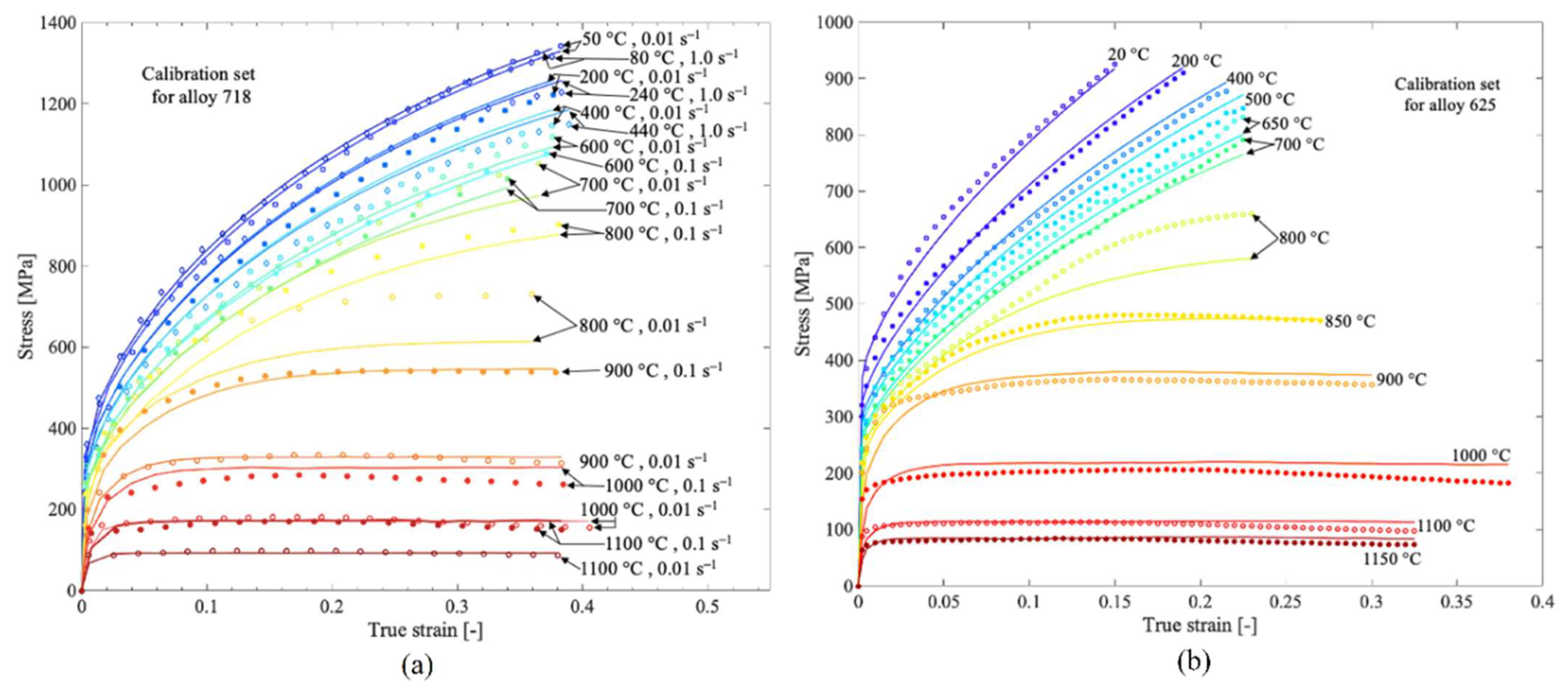
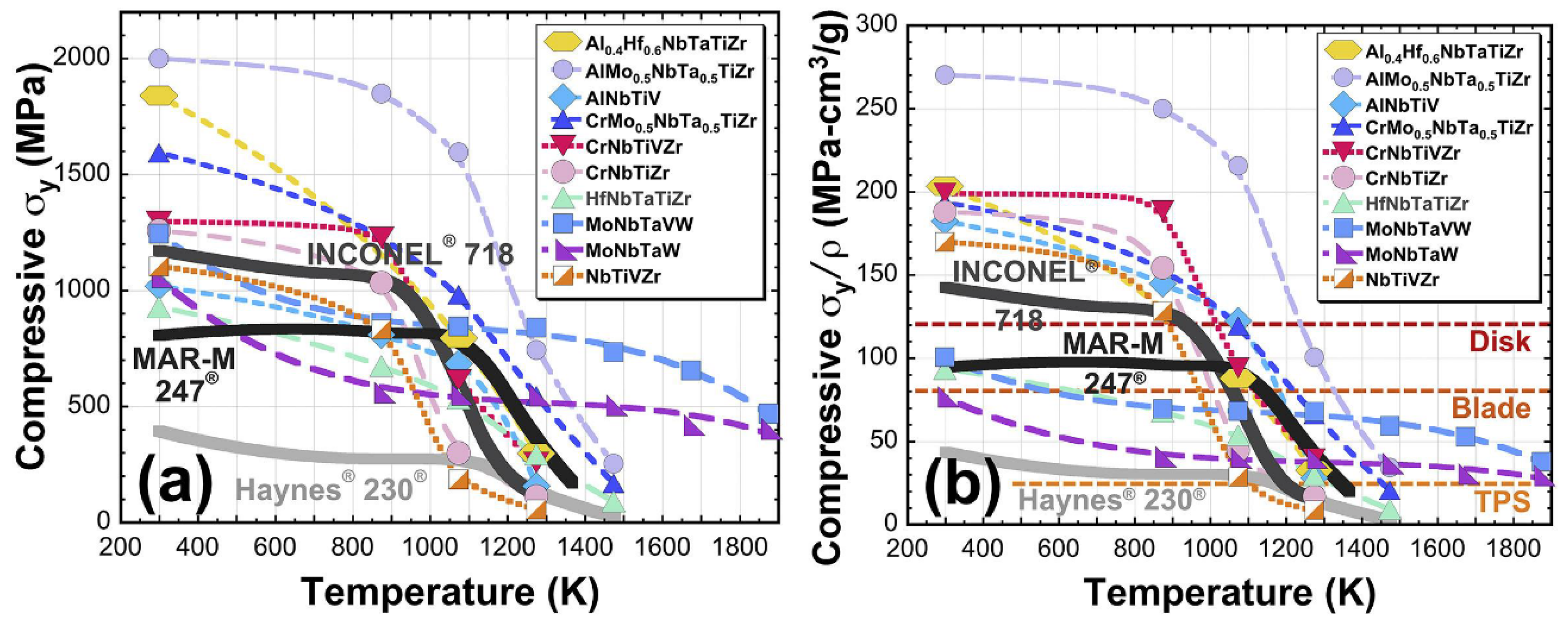
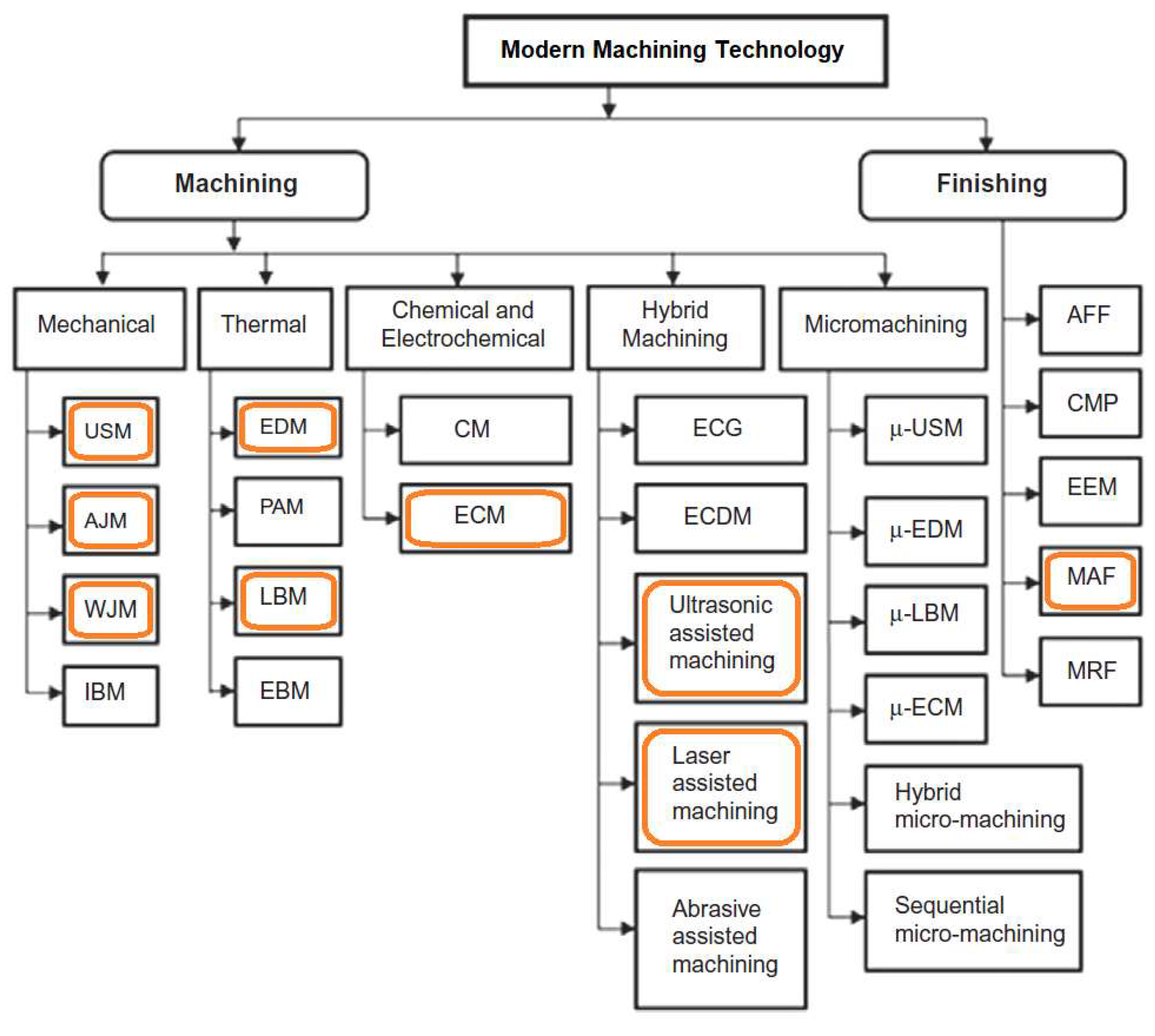
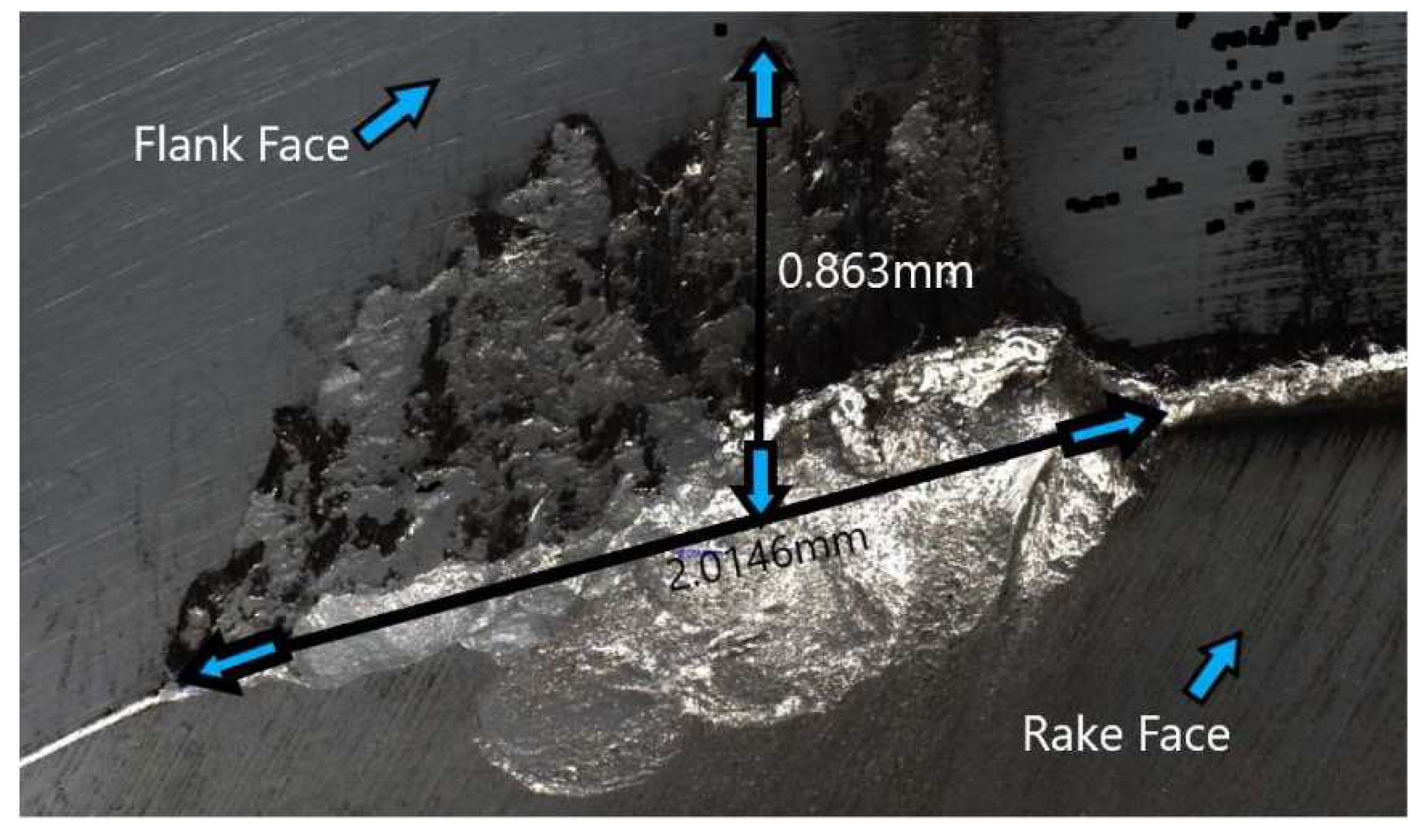


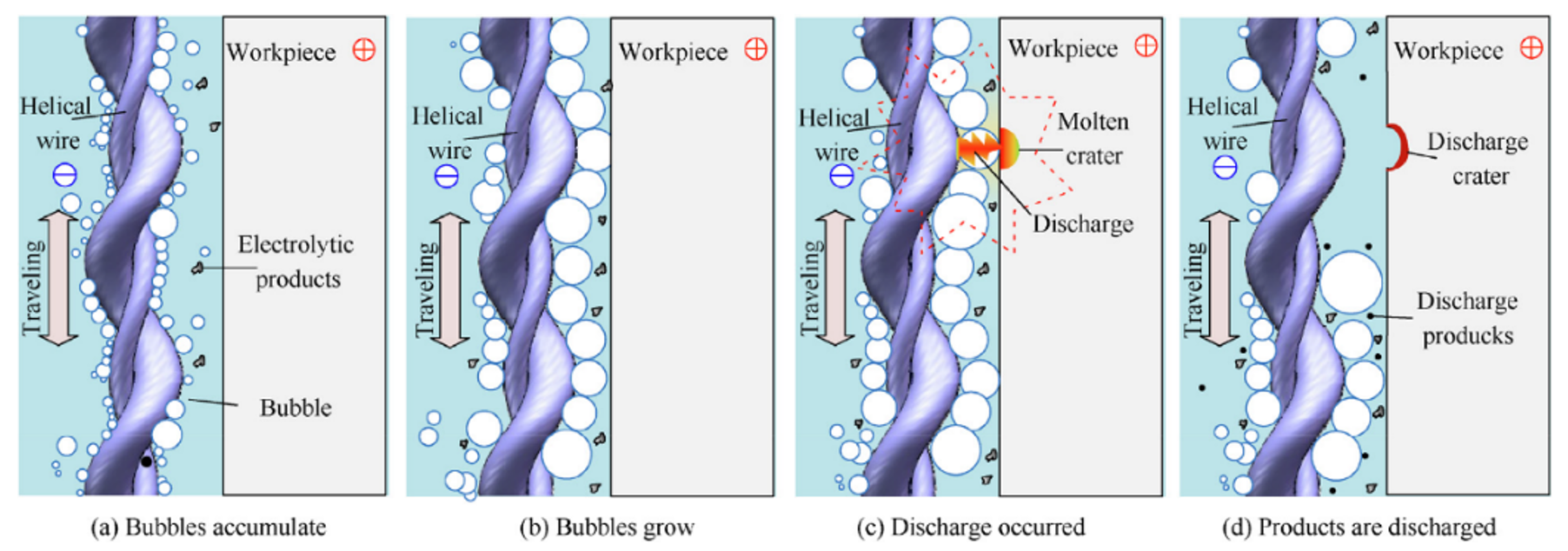
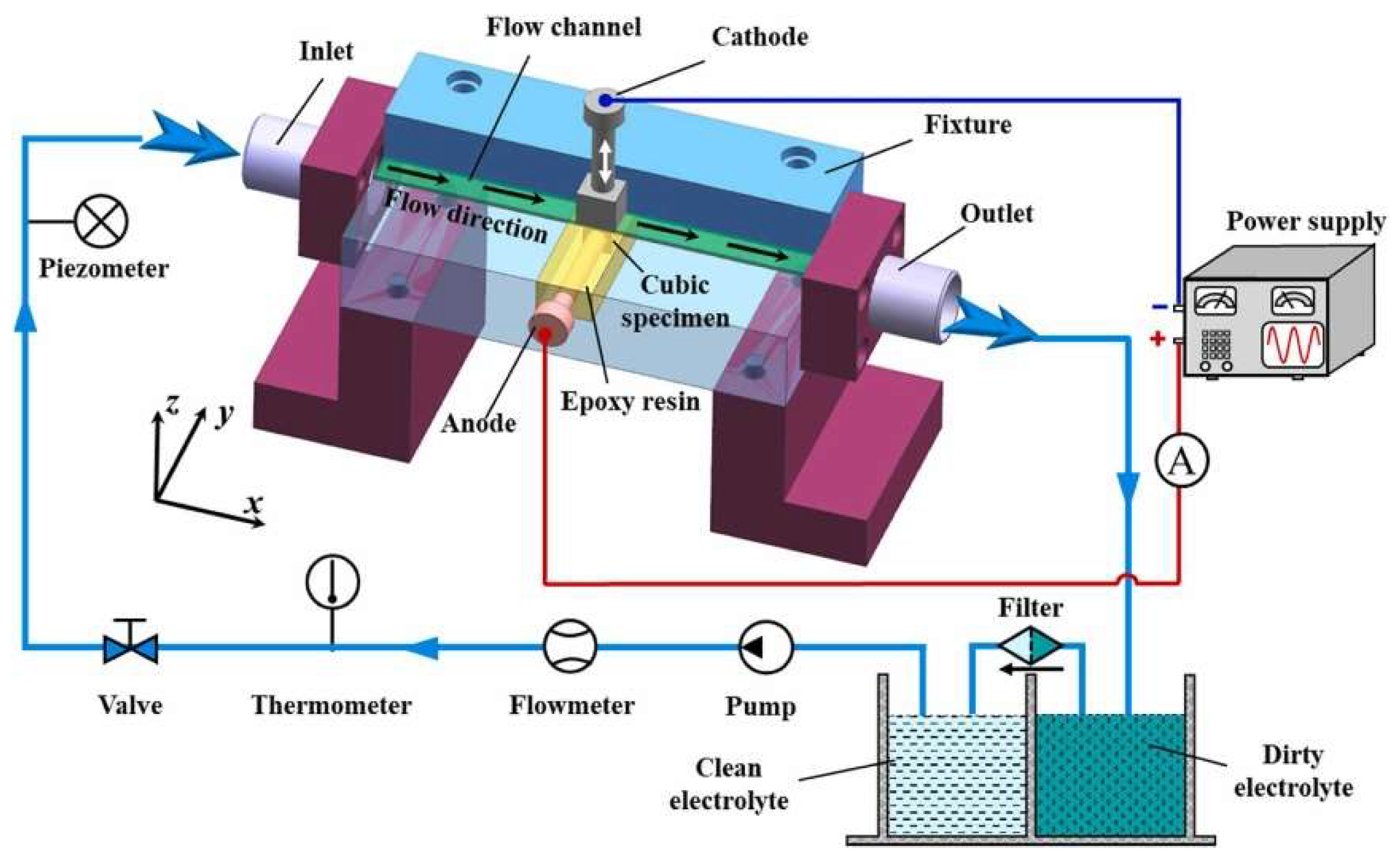


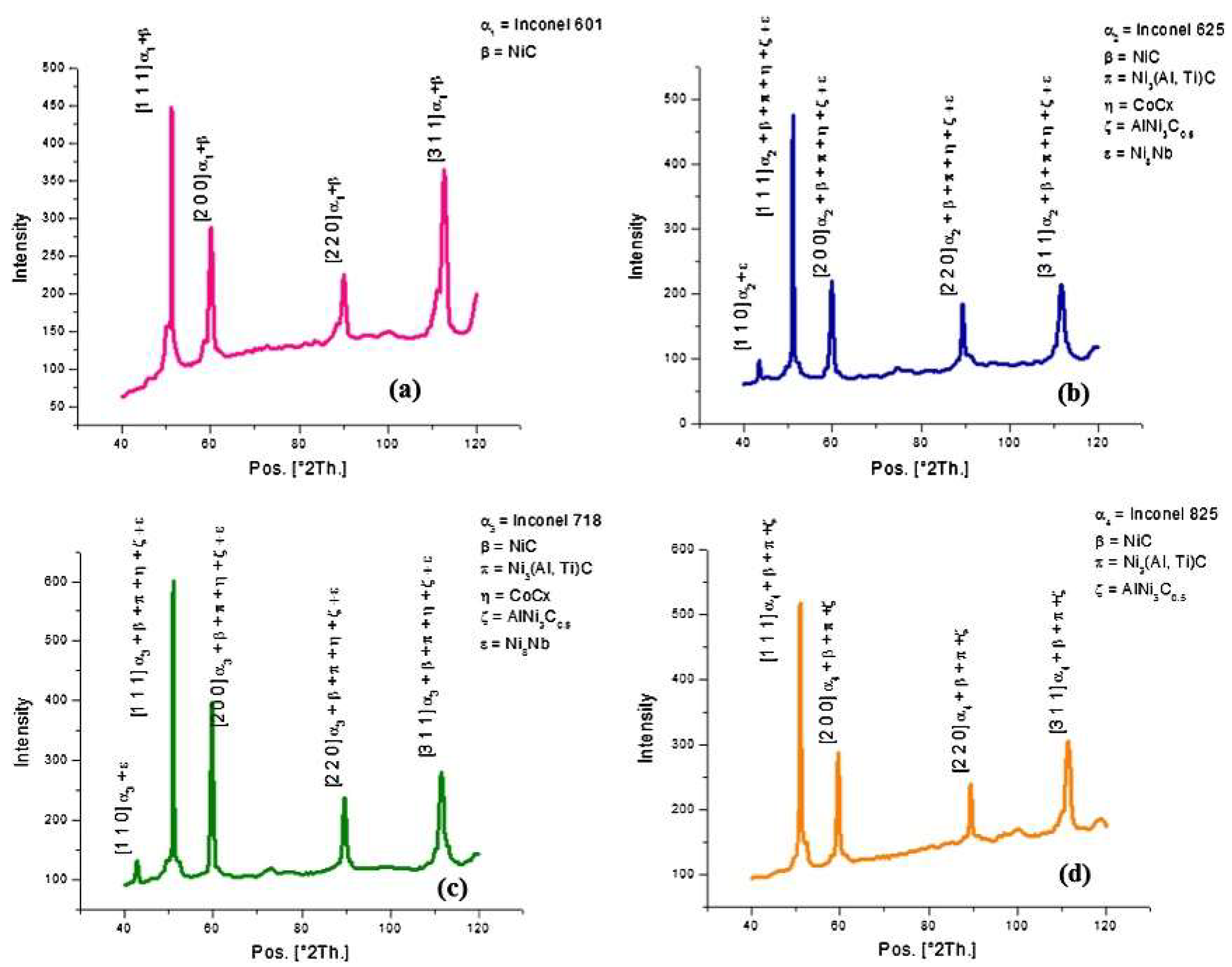
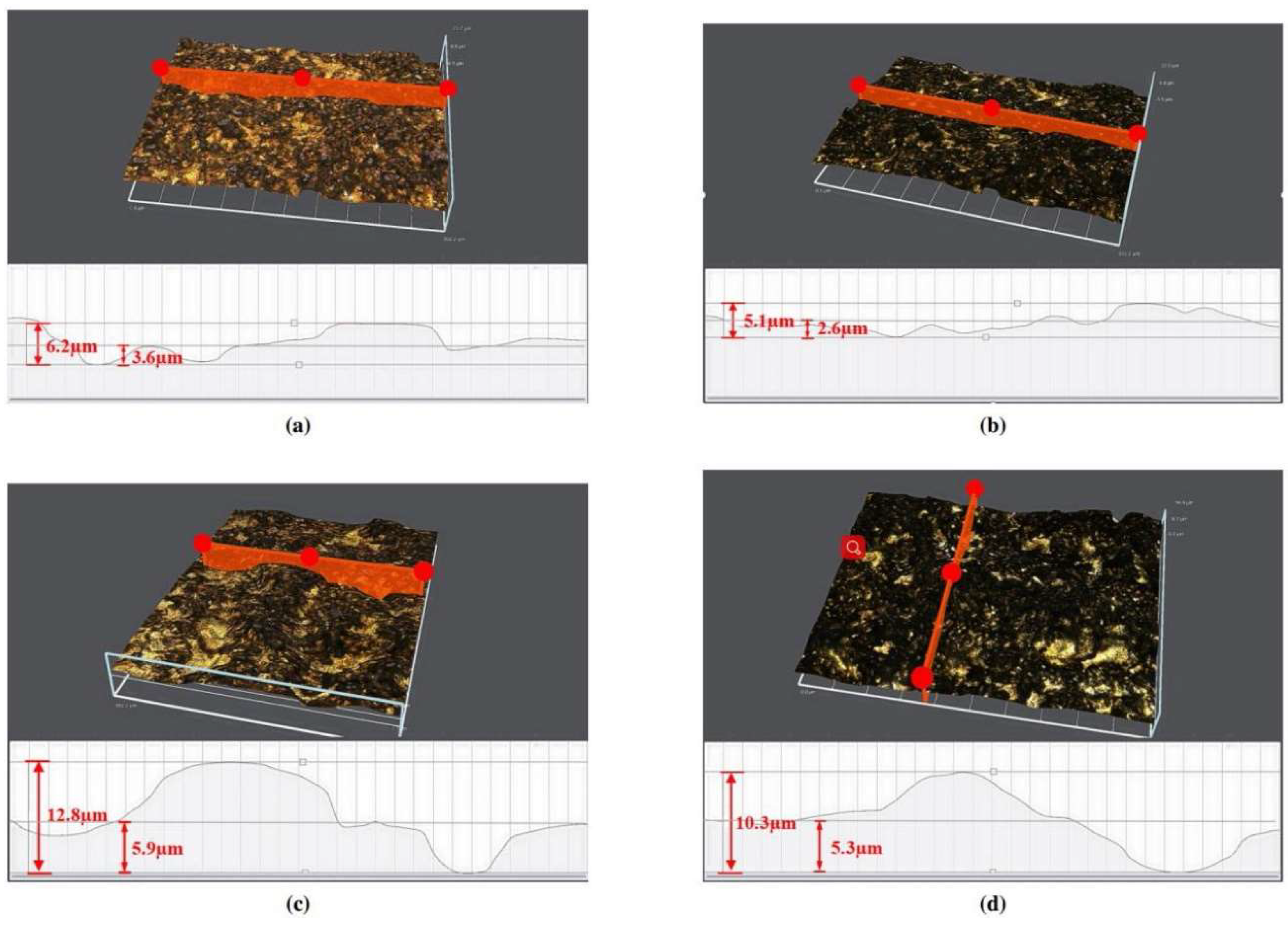

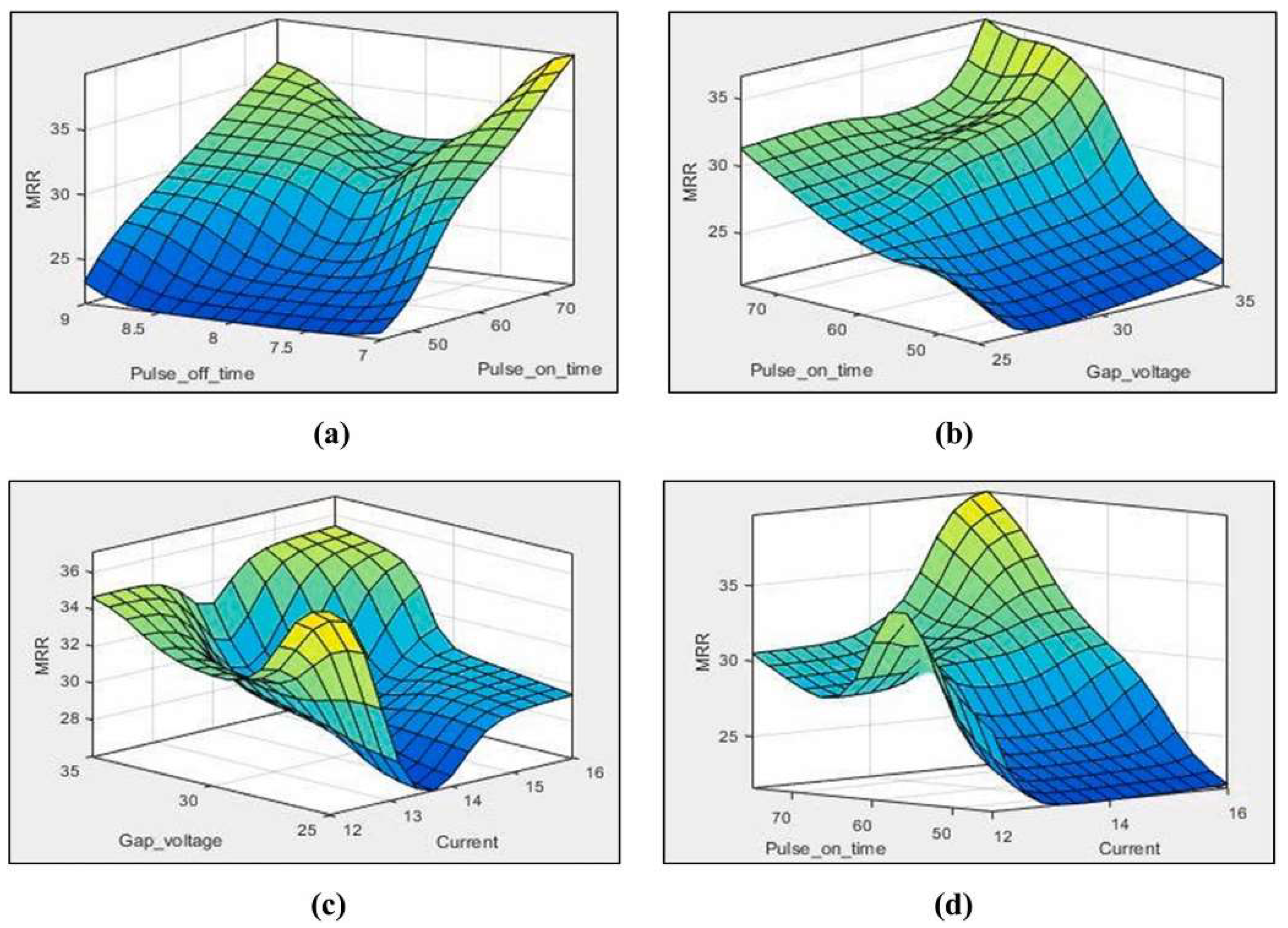
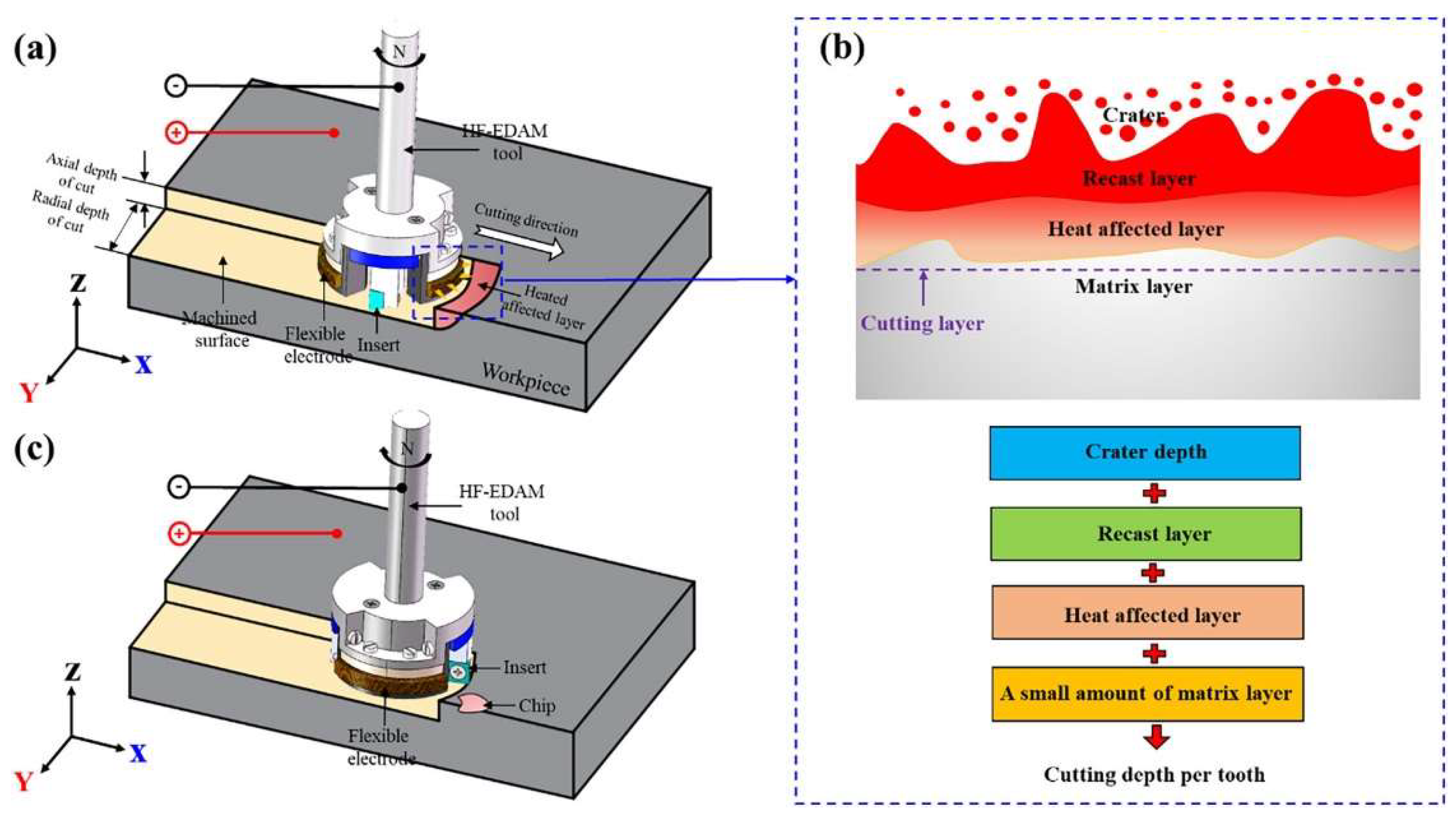

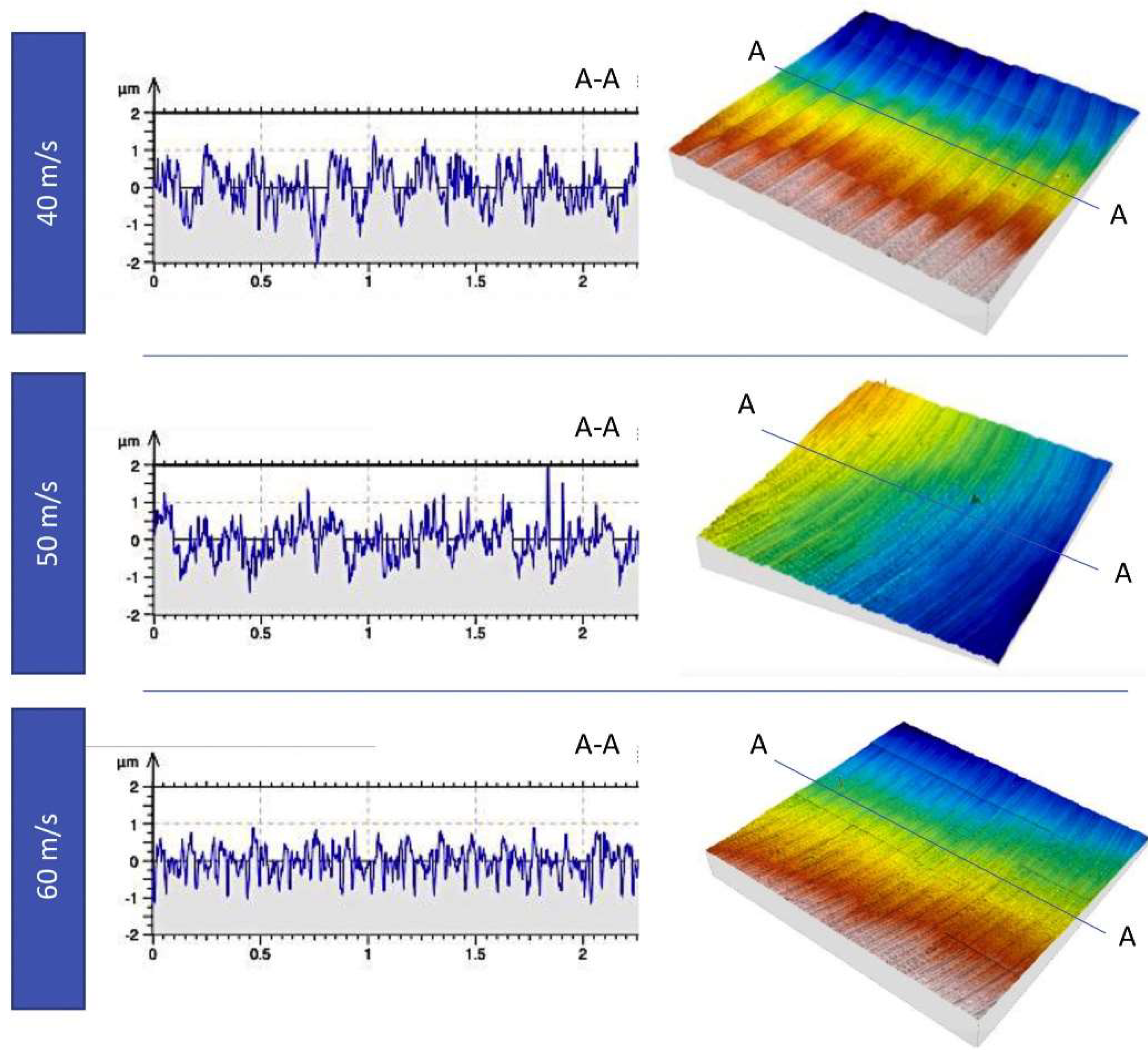
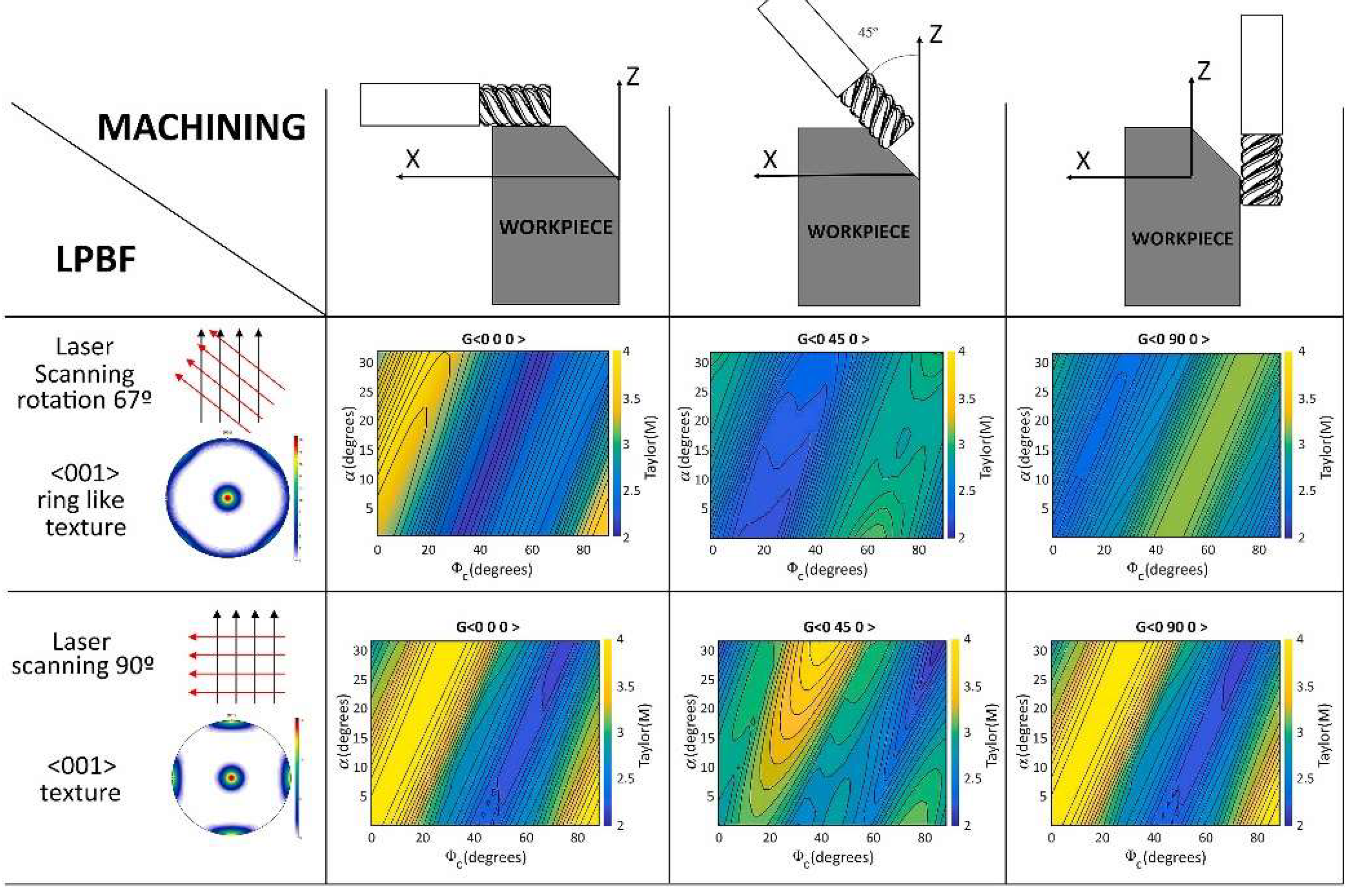


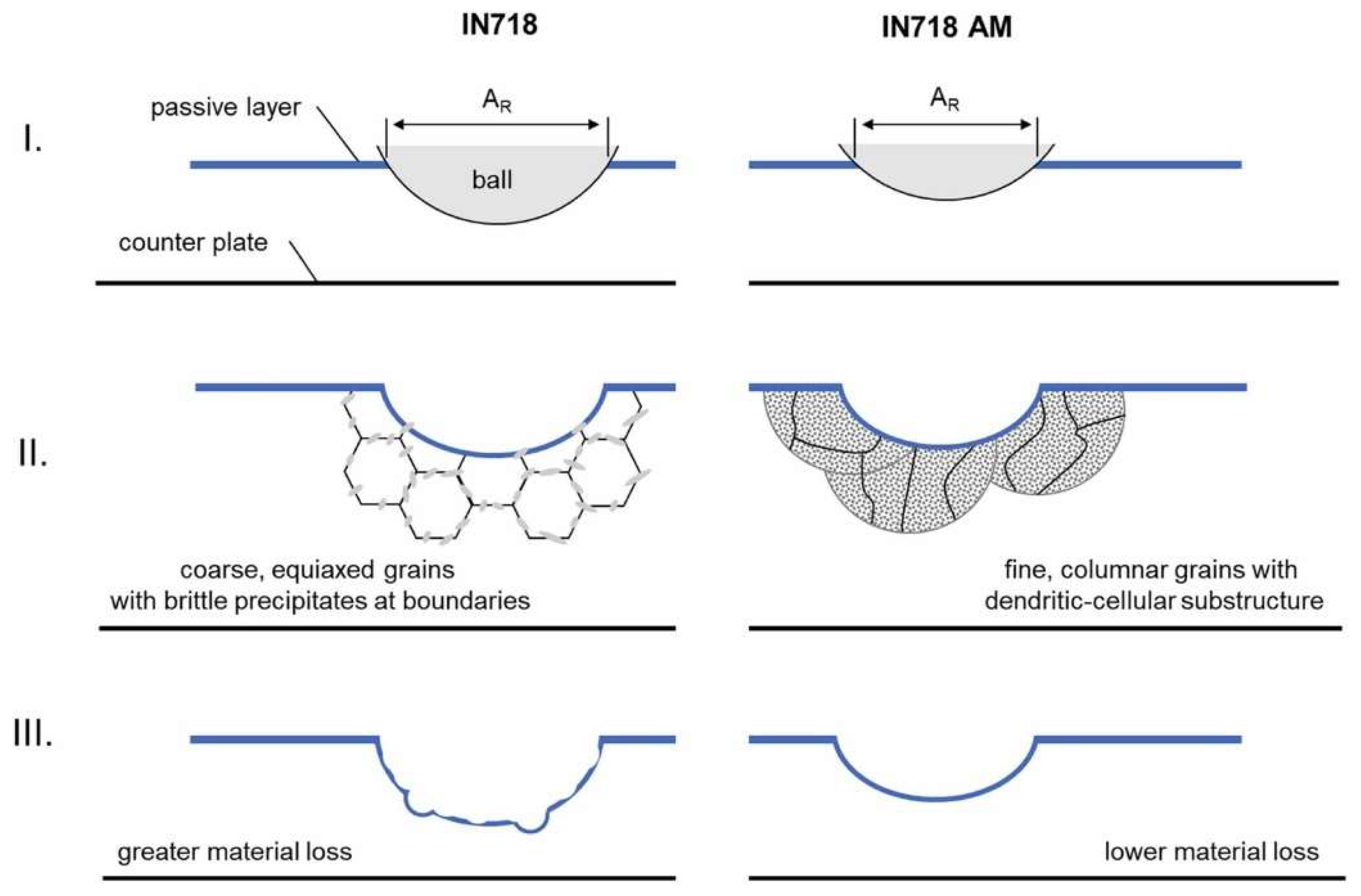
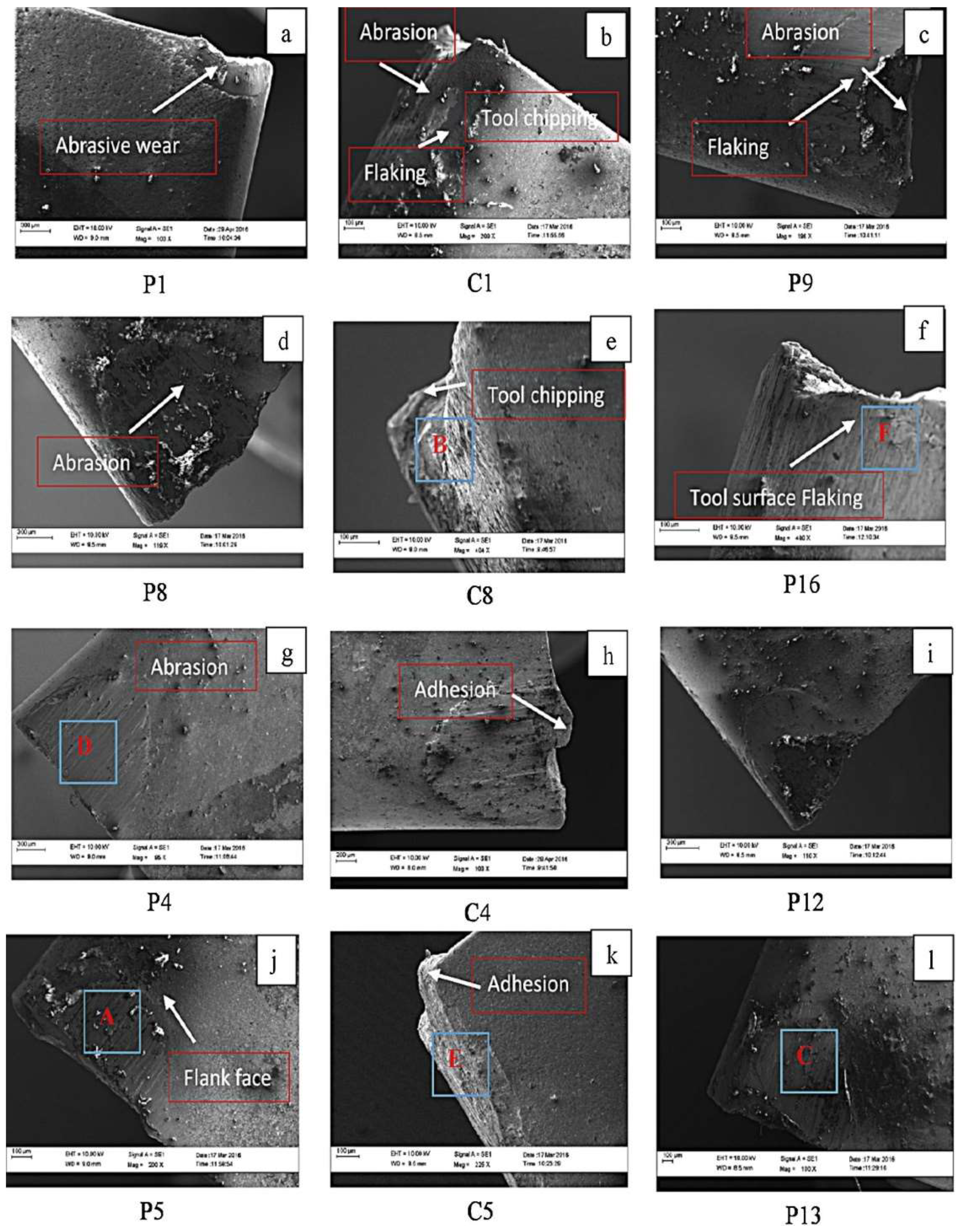

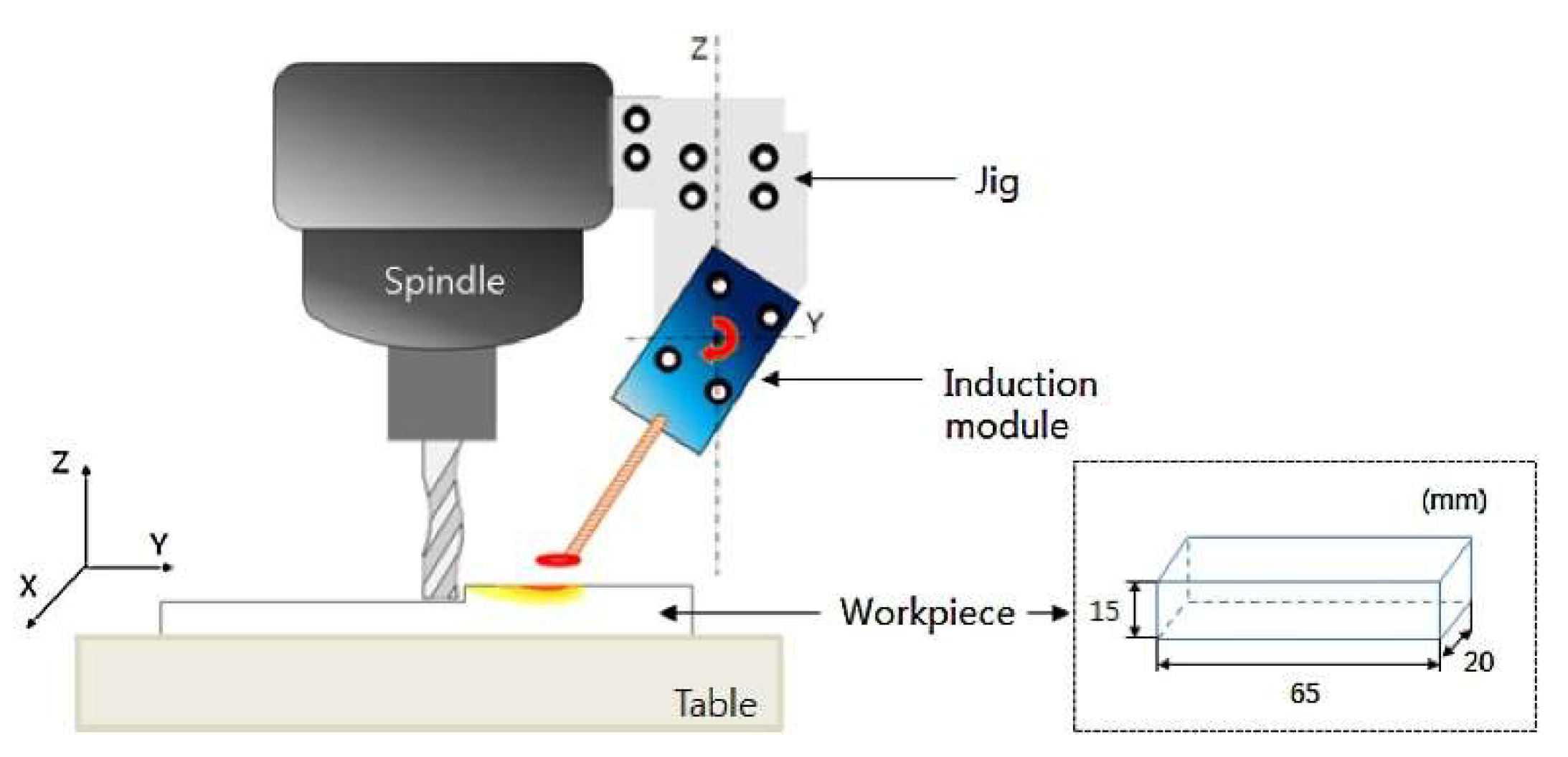
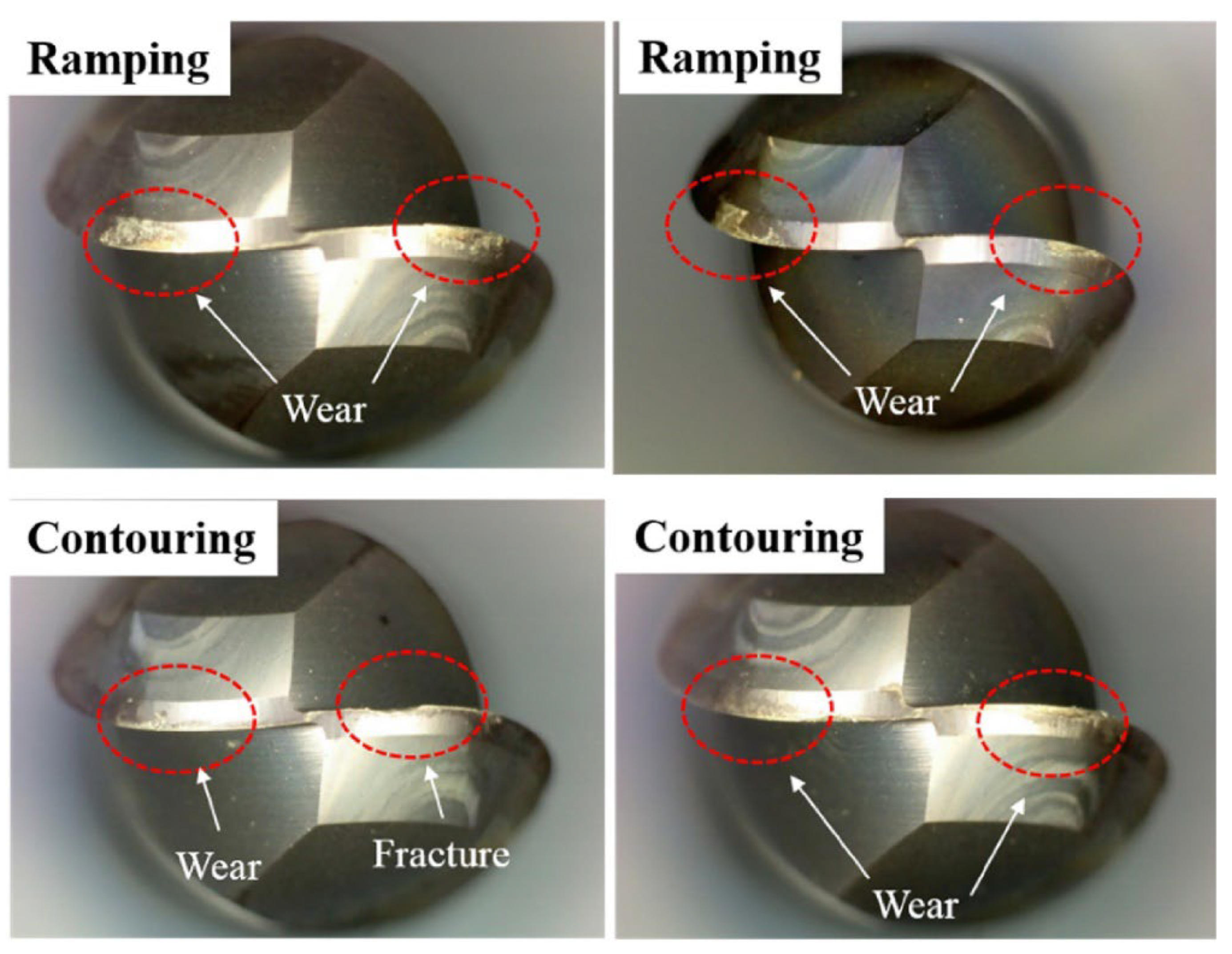

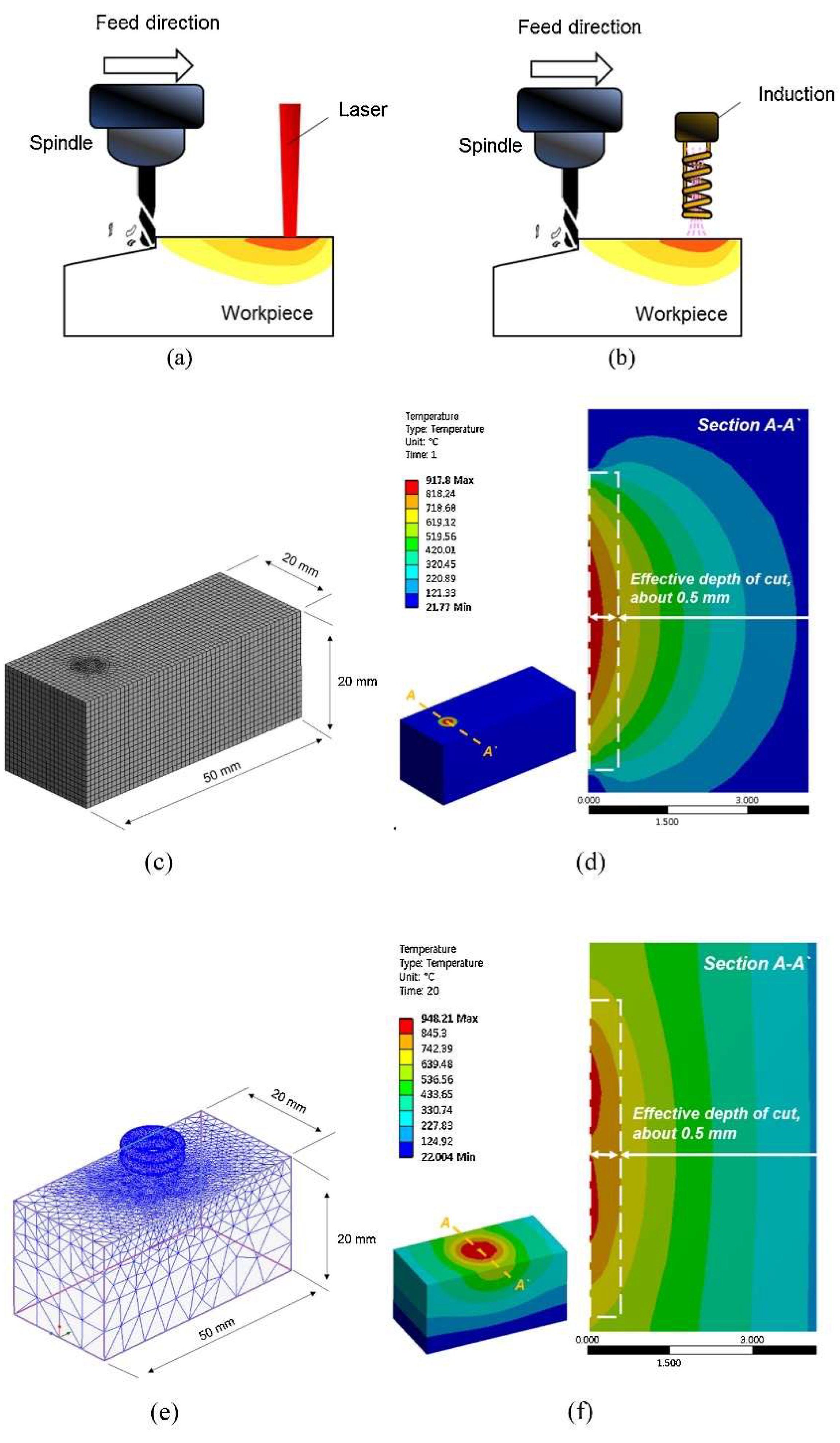
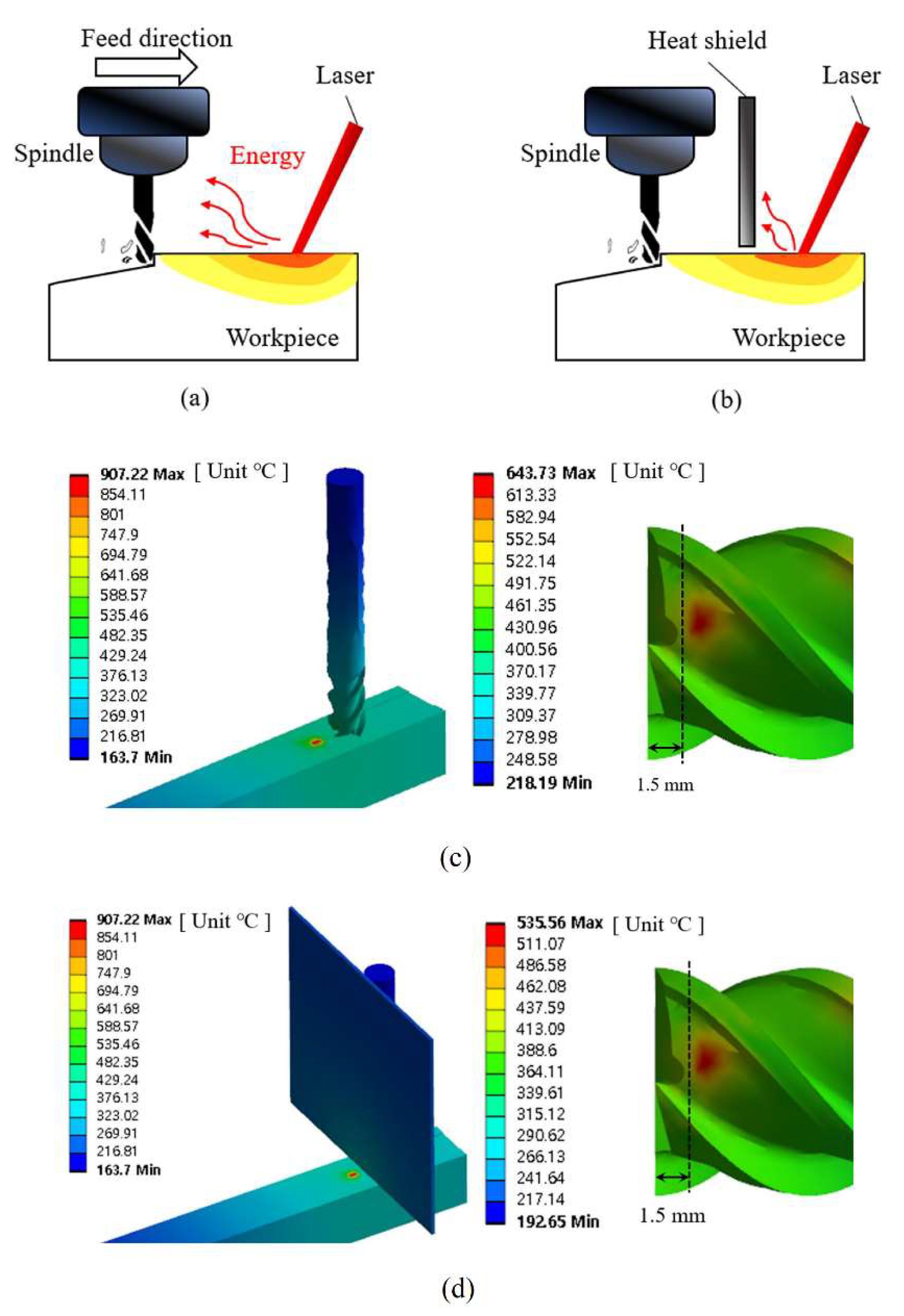
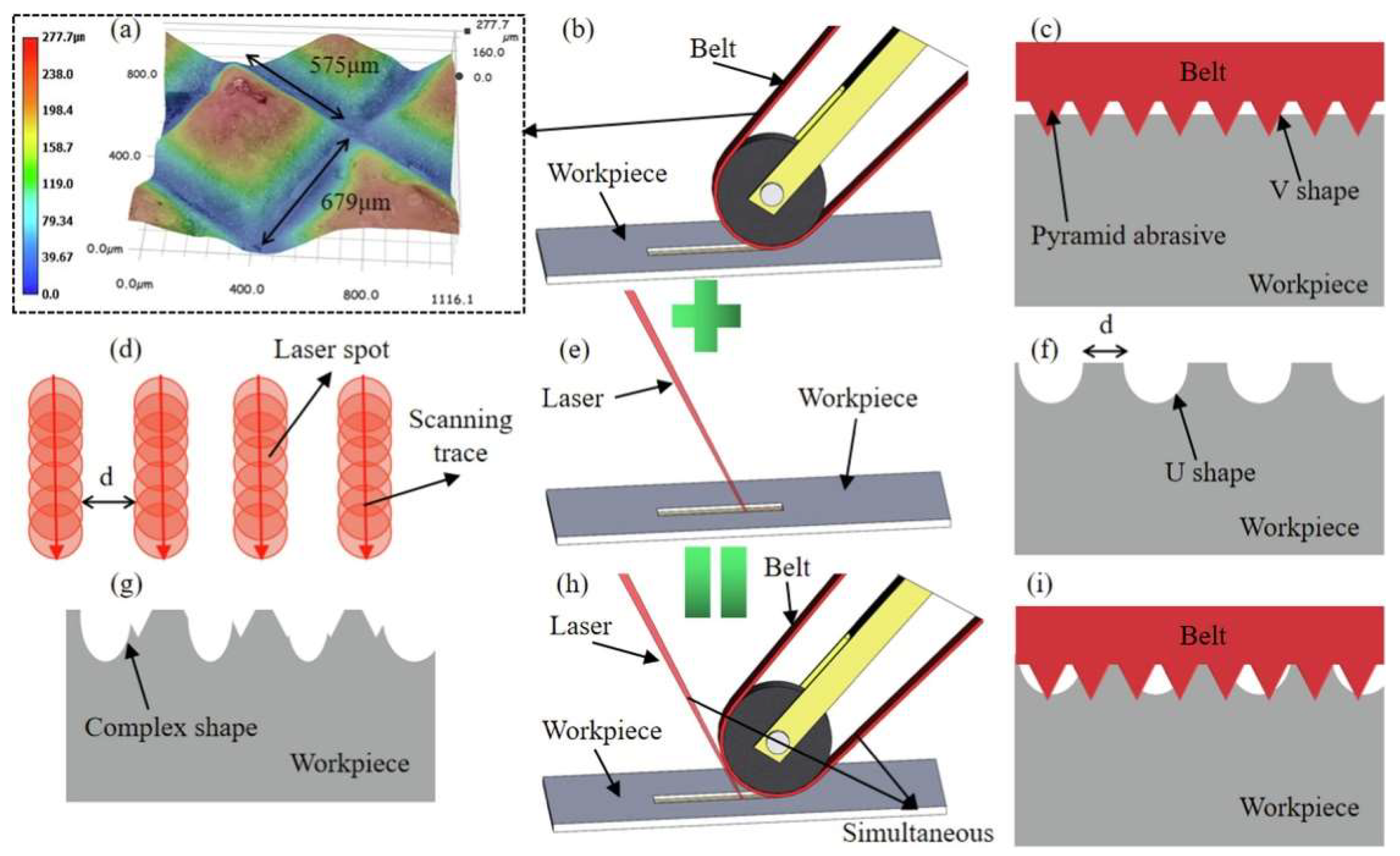


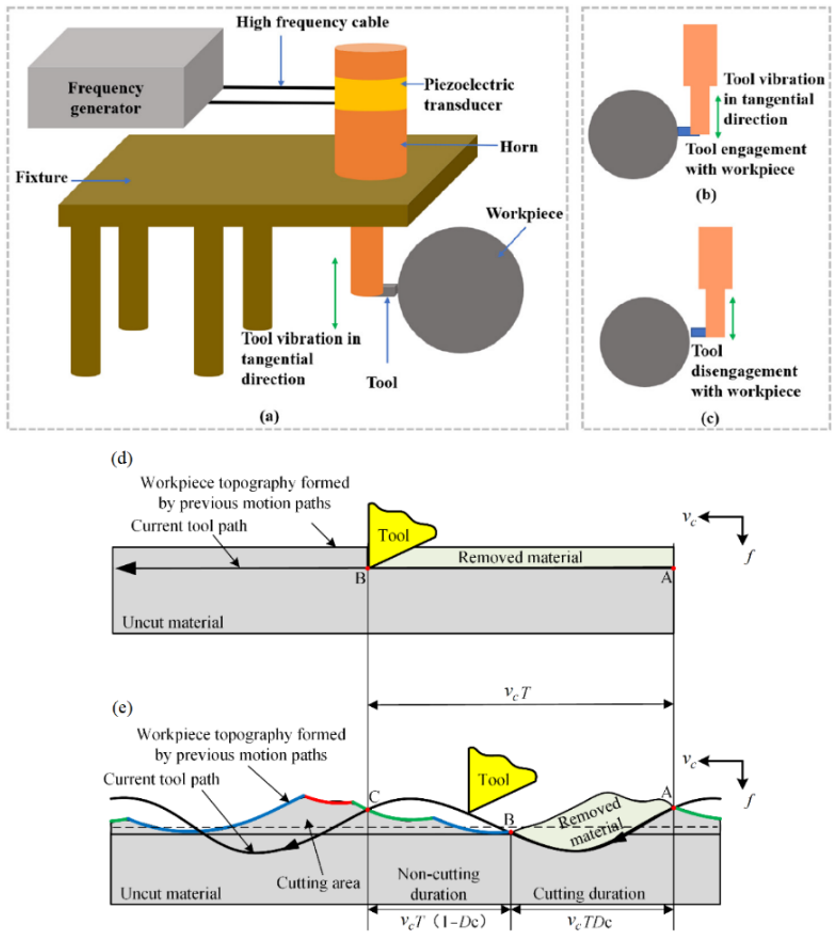
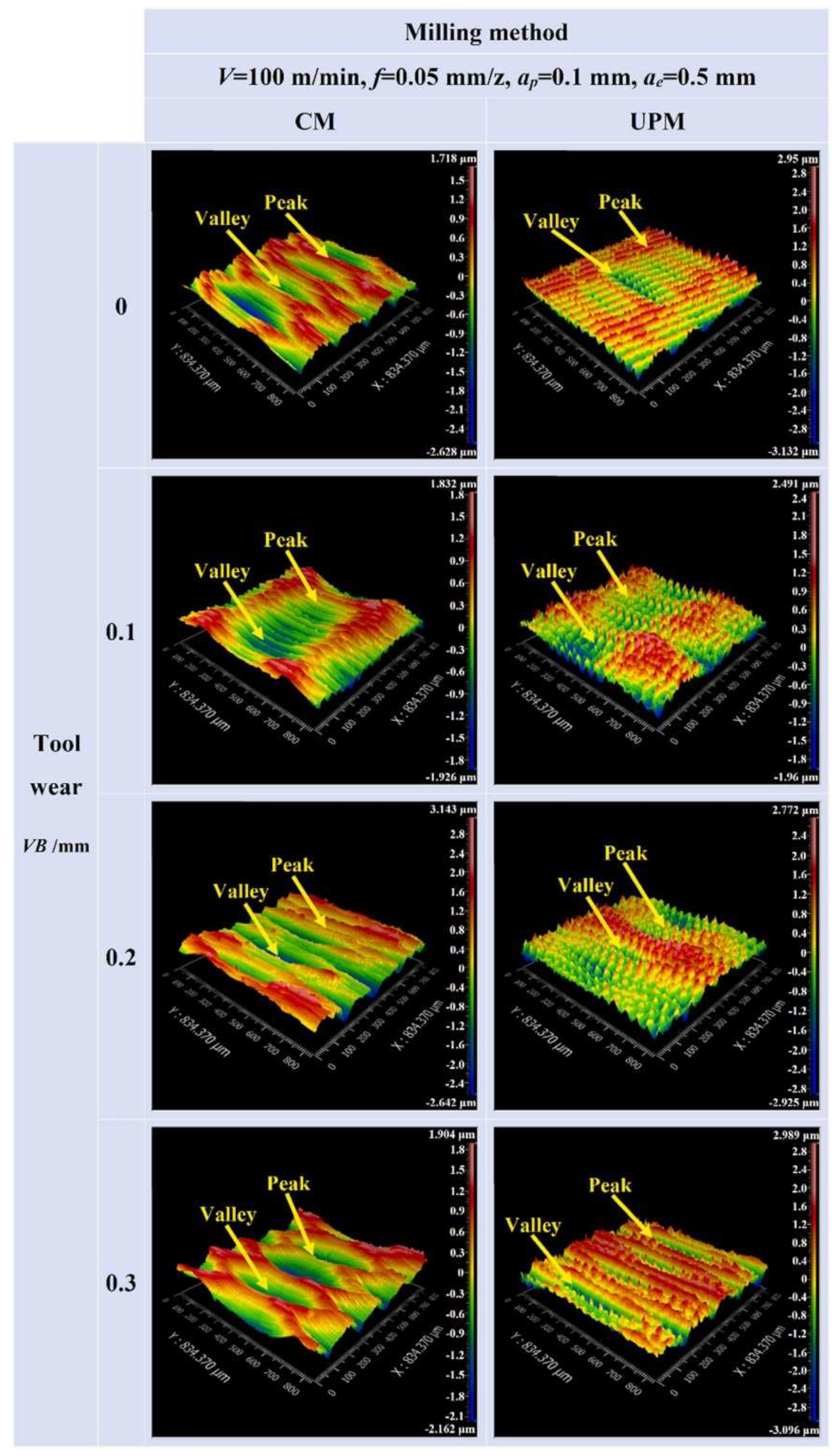


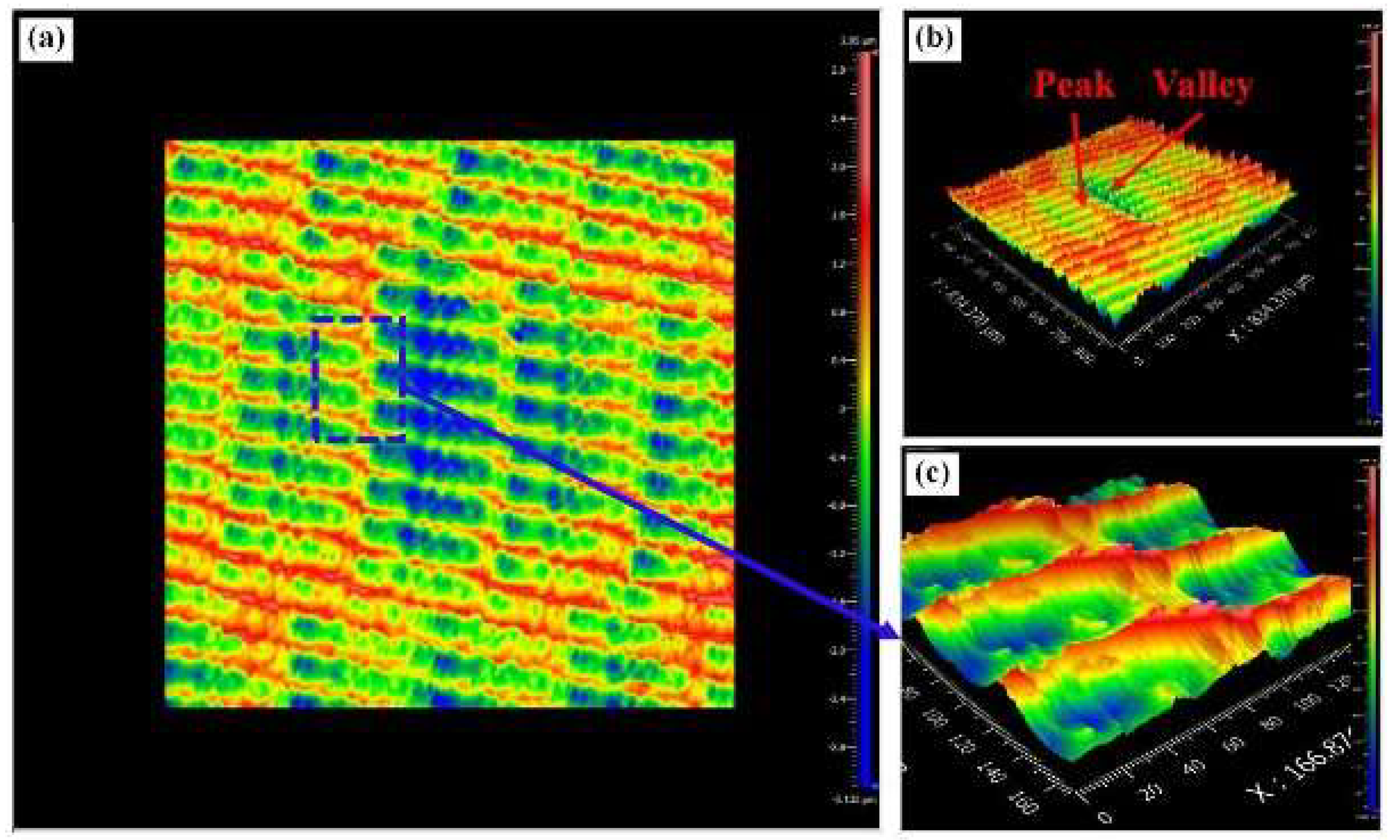
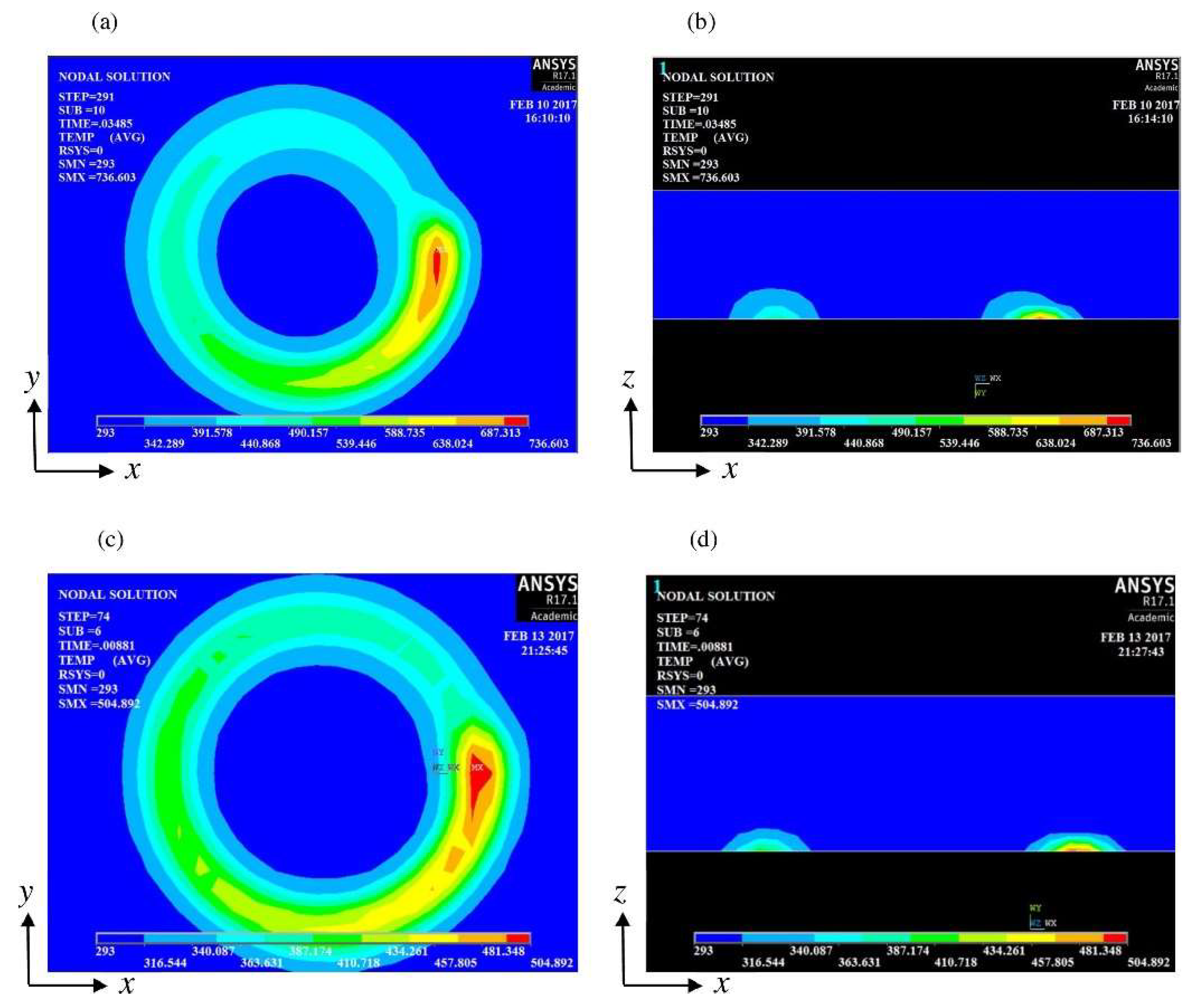
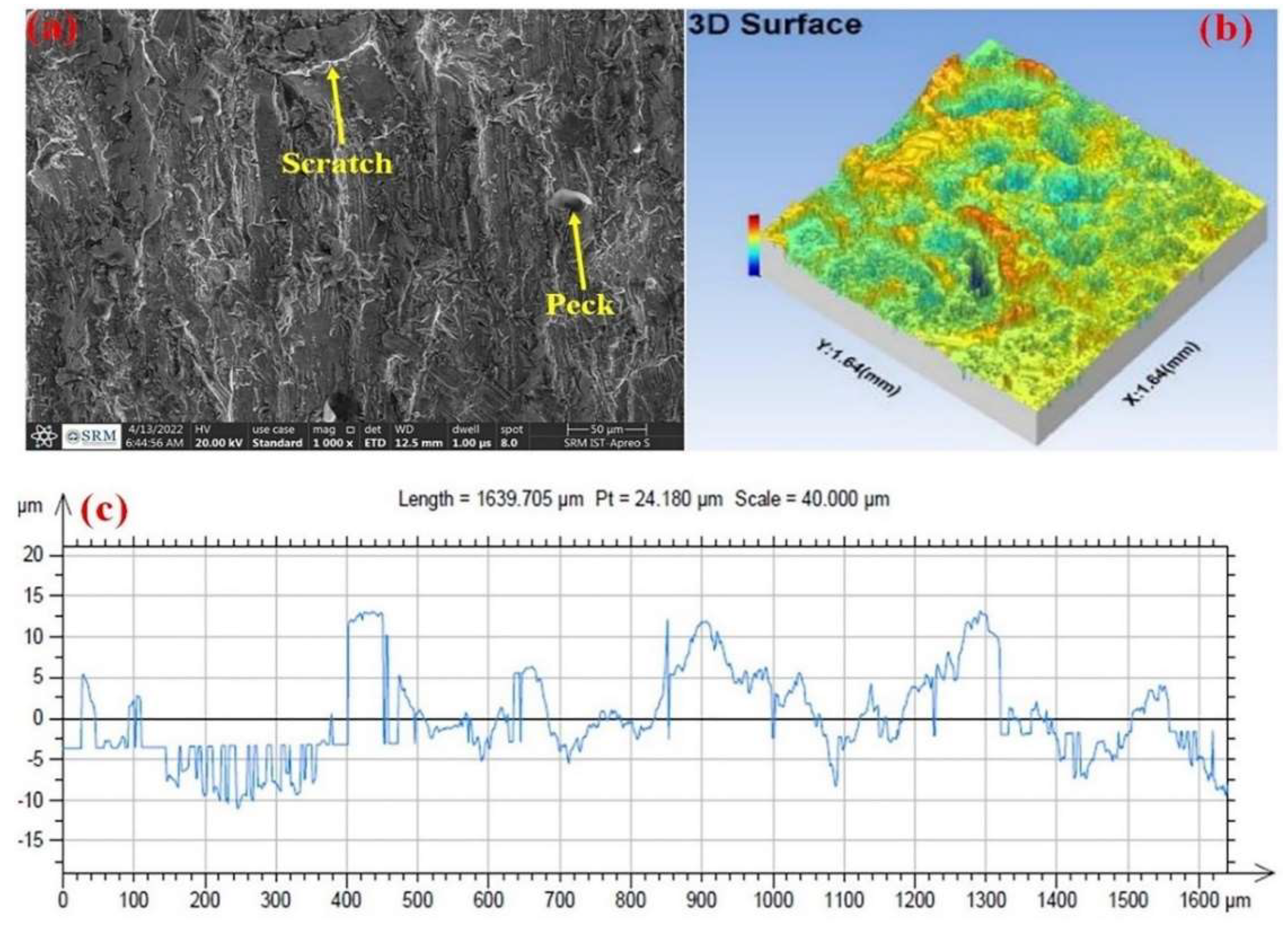


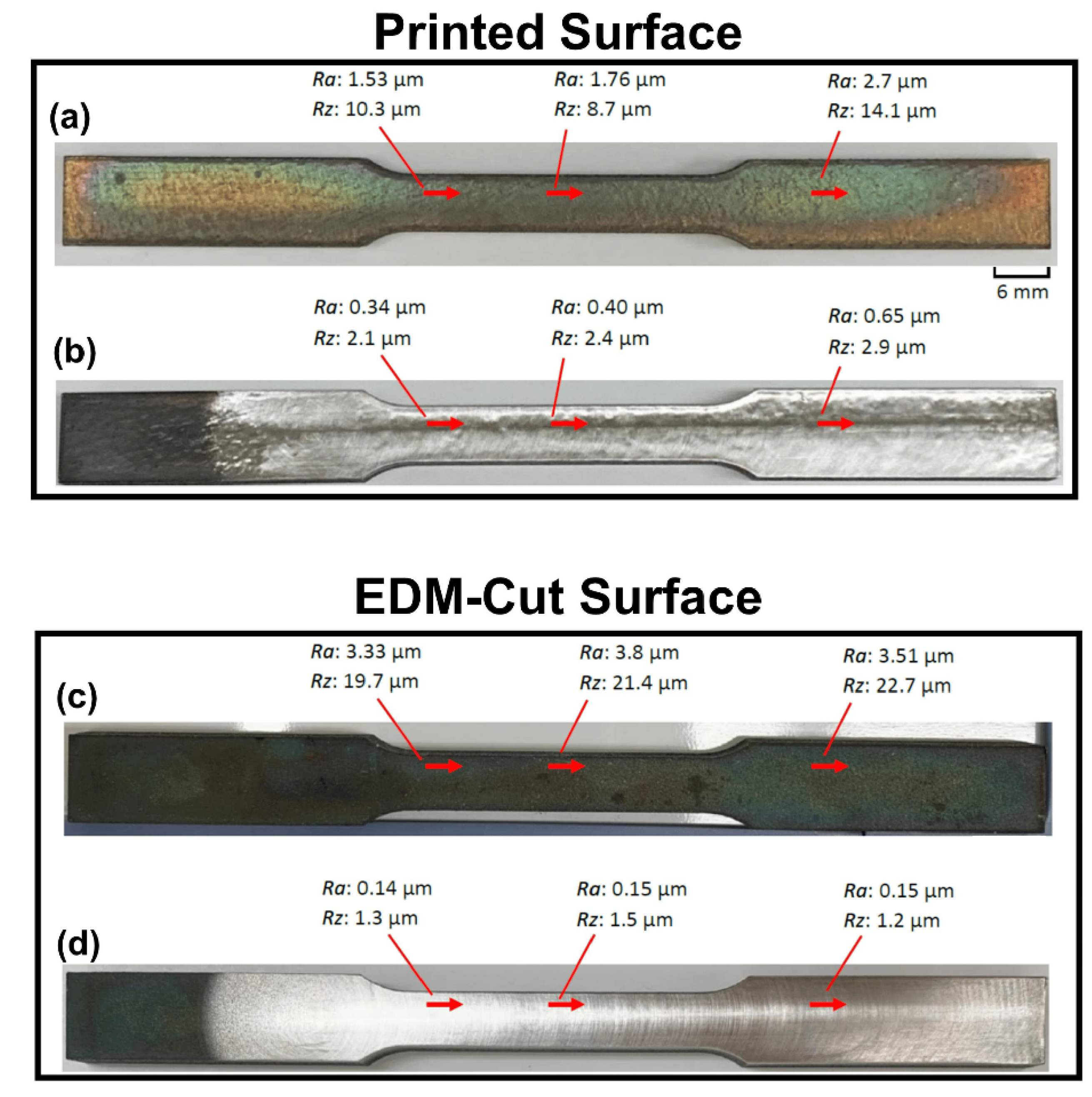
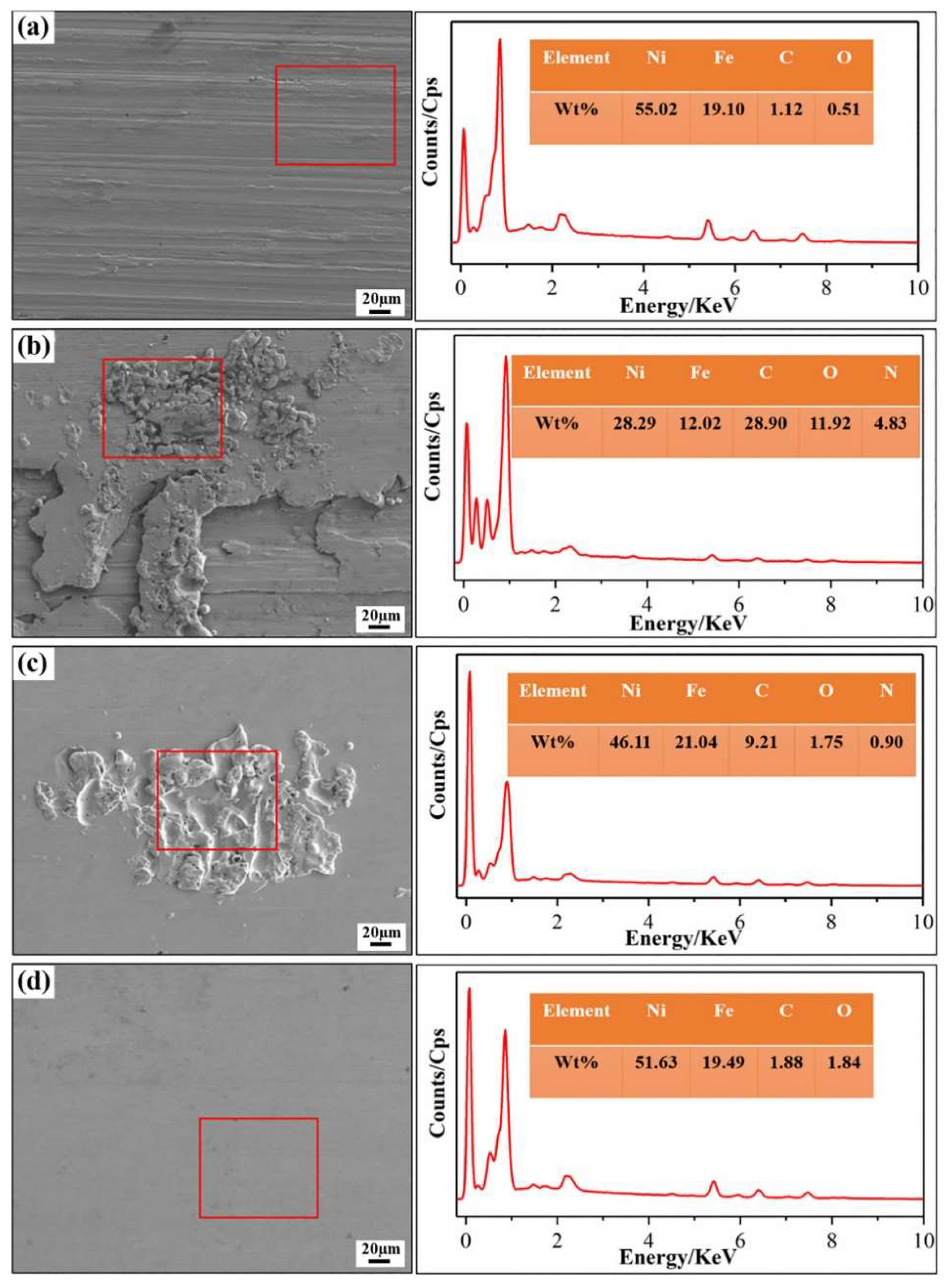


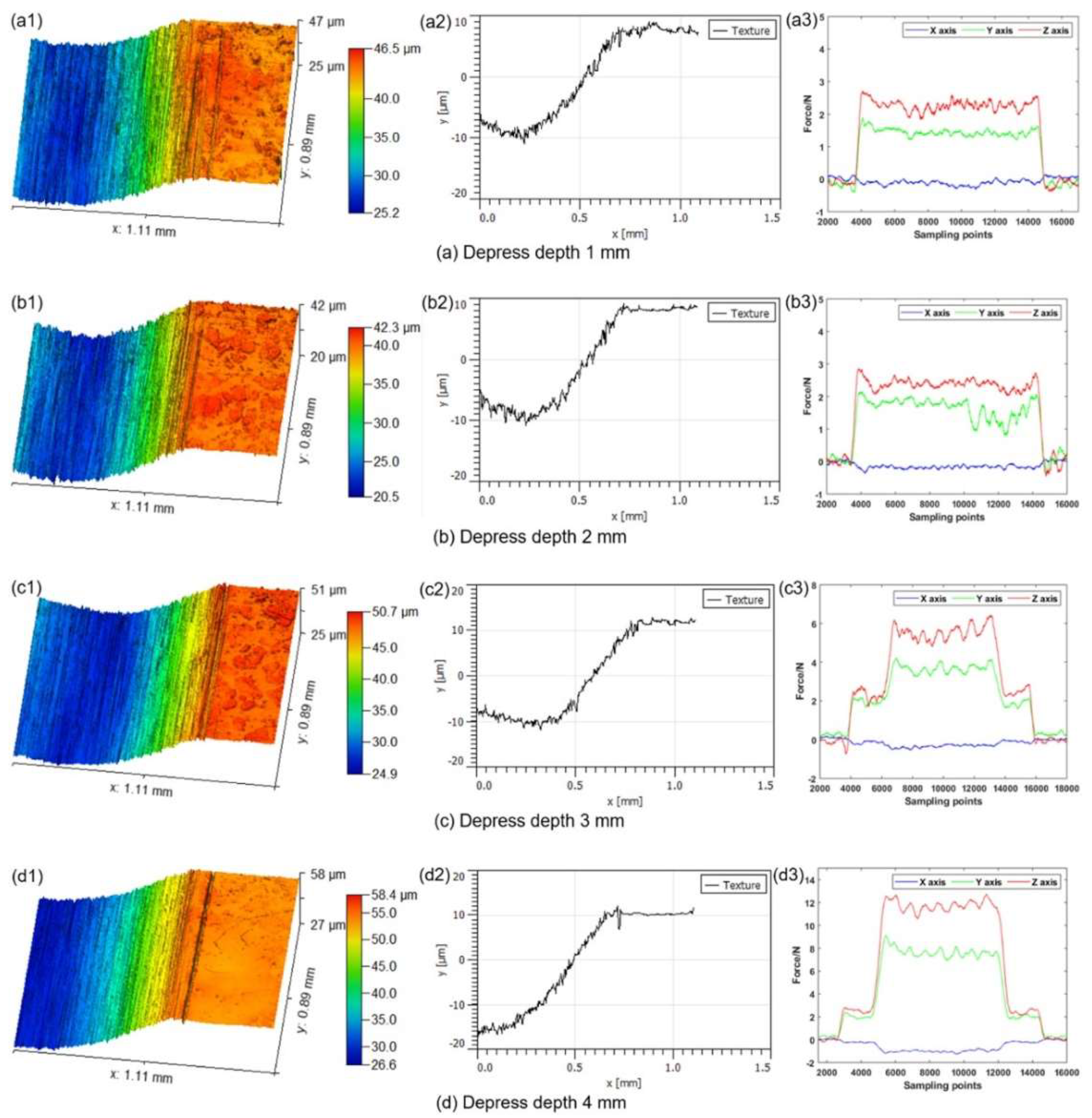
| Positive Factors | Negative Factors | |
|---|---|---|
| Internal factors | Strengths Precision Machining: The anodic metal dissolution process offers great atomic precision, producing complex shapes and intricate details with high MRR. Versatility: It is suitable for machining various materials, including hard and brittle ones like INCONEL® alloys, making it versatile for use in industries where precision and accuracy are paramount. There is no contact between the tool and the workpiece, and it does not produce heat; thus, the machined parts are not distorted. Specialized Variants: The existence of specialized variants like WECM, ECMG and ECD demonstrates the adaptability of ECM to address specific machining needs. Optimization Techniques: Research efforts showcase optimization techniques such as Taguchi approaches and enhanced tool designs, leading to improved machining characteristics and efficiency. | Weakness Corrosion Resistance: The corrosion resistance of INCONEL® alloys may hinder the ECM process without a proper electrolyte medium. SR: Uneven bulges and a rough surface may develop in ECM, especially when dealing with modified or doped INCONEL® alloys, as observed in the study by Ren et al., where the passivation film was removed, and the dissolution behaviour became uneven. |
| External factors | Opportunities Enhanced Tool Design: Ongoing research on enhanced tool designs provides opportunities to further improve the efficiency and effectiveness of ECM processes, especially for rough machining stages. Material Modification: Studies on modified or doped INCONEL® alloys open avenues for understanding and improving the electrochemical dissolution behaviour, potentially leading to enhanced performance in ECM. Hybrid Techniques: Introducing hybrid machining techniques, such as HWECDM, demonstrates opportunities for innovation and improved efficiency, especially for machining large-thickness hard metal materials. Corrosion Resistance: Using electrolyte mediums like citric acid (Cit3− or C6H5O73−) or potassium citrate (C6H5K3O7) can enhance INCONEL® ECM. | Threats Challenges in Transport: The intricate transport of electrolytic products in confined machining gaps poses a challenge, indicating potential difficulties in machining large-thickness workpieces using conventional ECM techniques. Material Specificity: The suitability of ECM for INCONEL® alloys may limit its applicability to a broader range of materials, potentially restricting its usage in industries where diverse materials need precise machining. Other Threats: Associated cost, specialized personnel and process monitoring. |
| Positive Factors | Negative Factors | |
|---|---|---|
| Internal factors | Strengths
High Precision Machining: INCONEL® EDM offers high precision in machining intricate and delicate parts, making it suitable for aerospace, automotive, medical and electronics applications. Versatility: EDM and its variants are versatile and capable of machining hardened metals and handling complex geometries that may be challenging for conventional machining methods. No contact is needed between the tool and workpiece. Variants for Specific Applications: The existence of variants like WEDM, MSEAM and HF-EDAM allows for tailored solutions to specific manufacturing requirements, offering flexibility and adaptability. Optimization Techniques: They demonstrate using optimization techniques like DOE and Taguchi methods to determine optimal parameters, maximize MRR and minimize Ra for better machining performance. | Weakness
Surface Quality Concerns: Surface quality achieved through EDM processes, particularly WEDM, may be lower than alternative manufacturing processes, leading to potential concerns about surface integrity and fatigue life. Limited Material Applicability: While effective for INCONEL® alloys, EDM may not be universally suitable for all materials, limiting its range of application in industries where diverse materials need precise machining. Other weaknesses are that it is environmentally sustainable, generates flammable gases and a characteristic white layer, and MRR and Ra parameters directly affect HAZ. Novel academic solutions take time to be applied to the industry. |
| External factors | Opportunities
Advanced Tool and Process Development: Ongoing research in servo gap control mechanisms, magnetic levitation and novel electrode materials provide opportunities for advanced tool and process development, potentially improving efficiency, speed and SR. The cryogenically cooled electrode provides better machining performance than ordinary wire. Hybrid Machining Techniques: The exploration of hybrid processes, such as HF-EDAM, combining EDM with milling, showcases opportunities for innovation, offering high-quality and efficient machining of INCONEL® alloys. | Threats
Competitive Alternative Processes: EDM may face competition from alternative manufacturing processes in terms of SR, stress influence and fatigue life, posing a threat to its widespread adoption. Challenges in Thermal Deformation: Challenges in managing thermal deformation during WEDM indicate potential difficulties in achieving optimal results within typical parametric ranges. Other Threats: Associated cost, specialized personnel and process monitoring. |
| Positive Factors | Negative Factors | |
|---|---|---|
| Internal factors | Strengths
Complex Geometries and Customization: INCONEL® AM processes enable high-precision production of complex geometries and customized products, which is particularly beneficial for industries requiring intricate and mission-critical components. Reduced Debris Production: AM is recognized for its sustainability-friendly approach, significantly reducing debris production and chipping during manufacturing and aligning with the growing emphasis on environmentally conscious practices. Versatility in AM Techniques: Techniques such as LPBF, DED and WAAM provide versatility regarding feedstock type, energy source and processing medium. This adaptability allows for a wide range of applications and customization possibilities. Moreover, the created anisotropy enhances machinability in specific directions. | Weakness
Post-Deposition Effects: While WAAM offers high deposition rates, it has undesirable effects like higher dilution, thermal distortion and a more significant HAZ. Additionally, the Laves phase in INCONEL® 718 microstructure may require modified post-deposition HT. Surface Quality Challenges: Certain AM methods, including WAAM, may face challenges related to surface quality. The need for post-processing steps to achieve the desired surface finish may be a drawback. Other weaknesses: Parameter definition is very immature due to complicated problems such as metallurgical, physical, chemical and thermal coupling and the subsequent relationship among them; novel academic solutions take time to be applied to the industry and highly energetic consumption (AM alone). |
| External factors | Opportunities
Advanced Cooling and Lubrication Techniques: Machining characteristics can be improved through sustainable cooling conditions. Advanced cooling and lubrication techniques can enhance TL, reduce TW and improve SR. Hybrid Manufacturing Processes: The integration of AM with traditional processes offers opportunities to leverage the strengths of both methods. This hybrid approach can lead to improved efficiency and part quality. With technological advances and newer scientific investigations, AM can see weaknesses and problems resolved in the long term. | Threats
Competition from CM: Despite its advantages, AM may face competition from well-established conventional processes, especially for specific applications. Traditional methods like drilling may still offer surface finish and efficiency advantages. Material-Specific Challenges: The use of INCONEL® alloys in AM processes may pose challenges specific to the material, such as thermal deformation, post-deposition effects and the need for optimized heat treatments. Addressing these challenges is crucial for broader adoption. |
| Positive Factors | Negative Factors | |
|---|---|---|
| Internal factors | Strengths Enhanced Efficiency: TAM improves machining efficiency by softening the workpiece. Combining heat sources with traditional processes enhances INCONEL® alloy machinability. This results in reduced Fc and improved MRR. Improved Surface Finish: TAM processes contribute to smoother and more precise cuts, leading to a better Ra, particularly evident in studies involving INCONEL® 718, where TAM shows a significant reduction in Ra compared to CM. Reduced TW: TAM processes exhibit reduced tool wear and subsurface damage, positively impacting TL and overall tool performance during machining. Tailored Material Properties: TAM allows for customising material properties, such as surface hardness and wear resistance. Combining heat sources with traditional processes enhances INCONEL® alloys machinability (TAM). Using an optimized heat shield may enhance the performance of these processes (TAM). Combining ultrasonic systems with traditional processes improves machinability through better and higher MRR values (USM). | Weakness Complex Process Integration: Implementing TAM requires additional energy sources and complex machinery, which may lead to higher initial setup costs. Integrating lasers, plasma arcs or induction coils adds complexity to the machining system. Heat sources affect INCONEL® alloys’ surface and lower the tool’s superficial hardness if a heat shield (TAM) is not used. Precision Challenges: Achieving optimal results with TAM processes demands precise control over various parameters, including laser power, cutting speeds and feed rates. Variations in these parameters may affect the quality and consistency of machining outcomes. Material-Specific Optimization: The effectiveness of TAM processes may vary depending on the material being machined. While studies show positive results for INCONEL® alloys, the applicability to other materials might require specific process adjustments. Ultrasonic systems tend to increase TW, leading to a poorer TL (USM). |
| External factors | Opportunities Broad Material Applicability: TAM processes have shown promise in machining challenging materials like INCONEL® alloys. There is an opportunity to explore and optimize these processes for a broader range of materials, expanding their applicability. Technological Advancements: Continuous advancements in TAM technologies, including improvements in laser technology and plasma systems, present opportunities for enhanced precision, efficiency and reduced costs. In the mid-term, these hybrid processes (TAM and USM) are the best to adopt regarding the remaining addressed non-conventional processes. Environmental Sustainability: TAM processes can be positioned as environmentally sustainable options if energy-efficient sources are employed. Using lasers and induction for localized heating may contribute to reduced energy consumption compared to conventional methods. | Threats High Initial Investment: The initial cost of acquiring and setting up TAM equipment, especially for advanced processes like LBP, may pose a barrier to adoption for some manufacturers. Competitive Traditional Machining: Traditional machining methods continue to be widely adopted, and advancements in cutting tools and techniques might pose competition to adopting TAM processes. With technological advances, these hybrid processes may be rapidly surpassed by purely non-conventional processes. Skill Requirements: Operating TAM processes effectively requires skilled personnel with expertise in CM and the additional technologies involved. The shortage of skilled operators might impede the widespread adoption of TAM. |
| Positive Factors | Negative Factors | |
|---|---|---|
| Internal factors | Strengths High Precision and Accuracy: LBM and LDM provide precise and accurate machining, making them suitable for applications where intricate designs and tight tolerances are crucial. Versatility in Material Machining: LBM and LDM showcase the ability to machine a wide range of materials, including metals like INCONEL® alloys, ceramics, plastics and composites. This versatility enhances their applicability across various industries. Complex Geometry Capability: These processes can handle complex and intricate geometries, making them valuable for manufacturing components with intricate designs or structures that are challenging to achieve through traditional machining methods. Non-contact Machining: LBM and LDM are non-contact machining techniques, reducing the risk of tool wear and minimizing the chances of contamination, which is particularly advantageous for machining delicate parts and maintaining material integrity. | Weakness Thermal Stresses and Residual Stresses: The main drawback of LBM and LDM is the generation of thermal stresses and residual stresses during the machining process. These stresses can potentially affect the machined components’ structural integrity and dimensional stability. Surface Quality Concerns: Achieving optimal surface quality is a challenge due to the thermal effects involved in the process. Issues such as surface defects and thermal damage may arise, impacting the final finish of the machined surfaces. Novel academic solutions take time to be applied to the industry. Highly energetic consumption. |
| External factors | Opportunities Parameters Optimization: Continuous research and optimization of laser parameters provide an opportunity to enhance the efficiency and effectiveness of LBM and LDM. Identifying optimal configurations, such as pulse frequency, scan speed and laser intensity, can improve machining results. Advanced Process Enhancements: Exploring advanced machining procedures, like those involving TGRA, offers opportunities to refine the process factors to achieve better MRR and SR. Increased Application Scope: As technology advances, there is an opportunity to expand the application scope of LBM and LDM to a broader range of industries beyond aerospace and automotive. This could involve adapting the processes for diverse materials and component types. | Threats
Competition from Traditional Methods: Despite their limitations, traditional machining techniques continue to be widely adopted. LBM and LDM may face competition from established methods, especially in industries where transitioning to non-traditional methods is challenging. Challenges in Thermal Management: Overcoming challenges related to thermal stresses and achieving better control over thermal effects during machining is critical. Failure to address these challenges may limit the acceptance of LBM and LDM in specific applications. Cost Considerations: The initial setup and operational costs associated with LBM and LDM equipment can be high. Cost considerations might pose a threat, especially in industries where budget constraints are significant. |
| Positive Factors | Negative Factors | |
|---|---|---|
| Internal factors | Strengths Material Compatibility: WJM effectively machines ductile and sensitive materials like INCONEL® alloys, providing a versatile solution for challenging materials. It does not produce heat; thus, the machined parts are not distorted. SR: WJM, especially with abrasives AWJM, can produce high-quality surfaces with minimal thermal warping and material distortion. This is crucial for maintaining the integrity of sensitive materials like INCONEL®. Environmental Friendliness: WJM and AWJM are considered environmentally friendly, as they do not produce hazardous waste or emissions, aligning with the increasing emphasis on sustainable manufacturing. High Precision and Tolerances: The processes offer high precision and accuracy, allowing for producing parts with tolerances as low as 10 μm. This is essential for applications where precision is a critical factor. | Weakness Surface Hardness: AWJM may exhibit lower surface hardness values than alternative manufacturing processes, a limitation for applications where high hardness is a critical requirement. Fatigue Limit: The relatively shallow penetration depth of AWJM may result in a lower fatigue limit. This can be a weakness, especially in applications where components are subjected to cyclic loading. Post-Machining Cleaning Requirement: Surfaces machined with AWJM may require additional cleaning to remove embedded abrasive particles. Failure to do so can result in higher surface roughness compared to CM. AWJM produces a “sludge” due to the abrasive powder it creates. |
| External factors | Opportunities Technological Advancements: Ongoing advancements in waterjet machining technologies, including nozzle design, abrasive materials and control systems, present opportunities for improving efficiency and addressing weaknesses. Increased Acceptance in Aerospace and Specialty Applications: As technology and processes mature, there is an opportunity for broader acceptance of water-jet machining in aerospace and other speciality applications where INCONEL® alloys are prevalent. | Threats Competition from Alternative Machining Techniques: Water-jet machining faces competition from alternative machining methods, including CM and other non-traditional techniques. The choice of the optimal technique may threaten the adoption of WJM for INCONEL® alloys. Initial Investment Costs: The initial costs associated with acquiring and setting up water-jet machining equipment, especially AWJM, may be relatively high. This could limit adoption, particularly for smaller manufacturers or those with budget constraints. |
| Positive Factors | Negative Factors | |
|---|---|---|
| Internal factors | Strengths Versatility of Processes: The variety of surface finish processes, including MAF, CEPUT, UAABG, RABG and post-heat treatment (HT), provide various options to cater to diverse finishing requirements for INCONEL® alloys. Surface Quality Enhancement: These surface finishing techniques, when appropriately applied, demonstrate the capability to enhance surface quality by reducing SR, improving microhardness, and promoting the formation of uniform surface grain deformation layers. Mechanical Property Improvement: The combination of certain processes, such as MAF and subsequent HT, has shown the potential to improve the mechanical properties of INCONEL® 718, leading to enhanced strength, ductility and crack growth resistance. Automated and Precise Control: RABG offers automated precision, ensuring consistent results and reducing the risk of human error. This is crucial for maintaining quality standards. Enhancement of the mechanical properties, namely surface hardness. | Weakness Process Sensitivity: The effectiveness of certain processes, like UAABG, can be sensitive to specific parameters, such as line speed and feed speed. Precise regulation and control may be challenging, potentially limiting the widespread application of these techniques. Complexity and Integration: Integrating multiple processes, as seen in hybrid approaches like MAF and subsequent post-HT, can introduce complexity into the finishing process. This complexity may require careful management and control. Not-so-established processes need precise regulation and control of service performance. |
| External factors | Opportunities
Technological Advancements: Ongoing advancements in surface finish technologies, such as improvements in abrasive materials, tool designs and control systems, present opportunities to enhance the efficiency and effectiveness of the finishing processes for INCONEL® alloys. Broader Acceptance in Additive Manufacturing: As the use of additive manufacturing, like LPBF, continues to grow, there is an opportunity for surface finish processes to play a vital role in enhancing the properties of additively manufactured components, specifically those made from INCONEL® alloys. | Threats
Competition from Traditional Methods: Surface finish processes face competition from traditional finishing methods. The choice between conventional abrasive processes and non-traditional techniques may influence the adoption of these newer methods for INCONEL® alloys. Regulatory and Environmental Constraints: Stringent regulations and environmental concerns related to using certain abrasive materials or chemicals in the finishing processes may pose threats. Adherence to environmental standards may impact the choice of finishing techniques. |
Disclaimer/Publisher’s Note: The statements, opinions and data contained in all publications are solely those of the individual author(s) and contributor(s) and not of MDPI and/or the editor(s). MDPI and/or the editor(s) disclaim responsibility for any injury to people or property resulting from any ideas, methods, instructions or products referred to in the content. |
© 2024 by the authors. Licensee MDPI, Basel, Switzerland. This article is an open access article distributed under the terms and conditions of the Creative Commons Attribution (CC BY) license (https://creativecommons.org/licenses/by/4.0/).
Share and Cite
Pedroso, A.F.V.; Sebbe, N.P.V.; Silva, F.J.G.; Campilho, R.D.S.G.; Sales-Contini, R.C.M.; Martinho, R.P.; Casais, R.B. An In-Depth Exploration of Unconventional Machining Techniques for INCONEL® Alloys. Materials 2024, 17, 1197. https://doi.org/10.3390/ma17051197
Pedroso AFV, Sebbe NPV, Silva FJG, Campilho RDSG, Sales-Contini RCM, Martinho RP, Casais RB. An In-Depth Exploration of Unconventional Machining Techniques for INCONEL® Alloys. Materials. 2024; 17(5):1197. https://doi.org/10.3390/ma17051197
Chicago/Turabian StylePedroso, André F. V., Naiara P. V. Sebbe, Francisco J. G. Silva, Raul D. S. G. Campilho, Rita C. M. Sales-Contini, Rui P. Martinho, and Rafaela B. Casais. 2024. "An In-Depth Exploration of Unconventional Machining Techniques for INCONEL® Alloys" Materials 17, no. 5: 1197. https://doi.org/10.3390/ma17051197
APA StylePedroso, A. F. V., Sebbe, N. P. V., Silva, F. J. G., Campilho, R. D. S. G., Sales-Contini, R. C. M., Martinho, R. P., & Casais, R. B. (2024). An In-Depth Exploration of Unconventional Machining Techniques for INCONEL® Alloys. Materials, 17(5), 1197. https://doi.org/10.3390/ma17051197









